The Article
A-S1200 Integrated Amplifier From Yamaha
26th February 2021
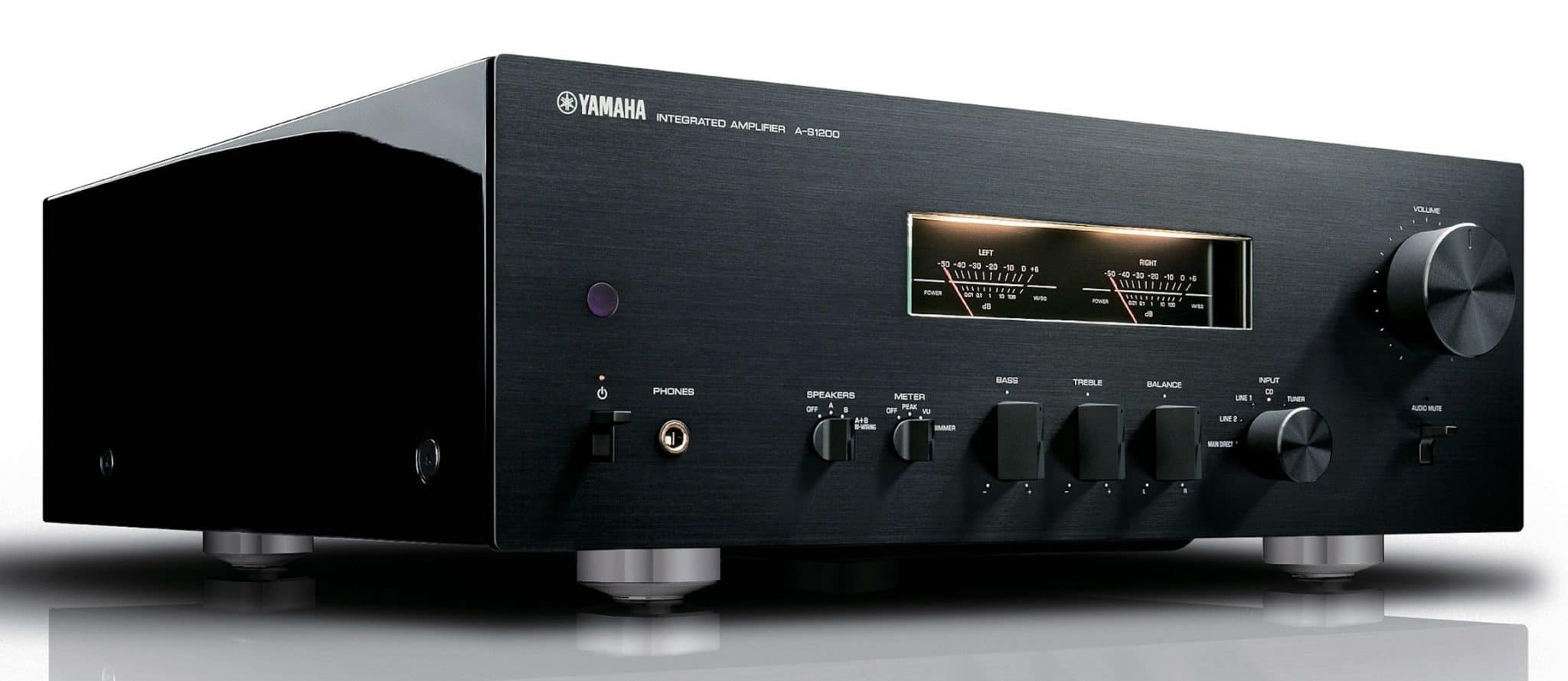
A hulking great integrated amplifier with a retro style, Paul Rigby climbs the north face of this new Yamaha amplifier
[NOTE: You may have seen my similar YouTube review on the A-S1200. This is a later revision of that review with a few included updates within the techie section.]
Before this A-S1200 piece, a few year’s back, I seemed to go through a Yamaha phase. That is, I found myself reviewing Yamaha products, one after another. A steady stream of Yamaha hardware seemed to pass through my hands and the brand – for a time – dominated the headlines on this site. Then life happened. Other brands wandered in and Yamaha took a back seat. Feast turned into famine.
That fact suddenly hit me so I thought it time to revisit the company. And how! This integrated amplifier is big. It’s heavy. It offers retro styling and most of all…it includes VU meters! Wahoo!
The A-S1200 offers 90W (into 8 Ohms) and fills space. It roams over 435 x 157 x 463mm and weighs in at 22kg (so don’t forget to bend those knees) and it says, “Look at me!” A lot. It features a wall of aluminium on its front fascia, switches, round knobs, cheese slice knobs and more holes on the rear than Lennon’s Blackburn, Lancashire.
Inside is a meaty toroidal transformer, film capacitors and internal shielding while the company says that the design utilises a, “Mechanical Ground Concept, which begins with the bolts of the feet welded directly to the main chassis, followed by the large heat sink, power transformer and block capacitors directly bolted to the chassis. Through this design, unwanted vibration is avoided, achieving expressive ‘groove’ in the music.”
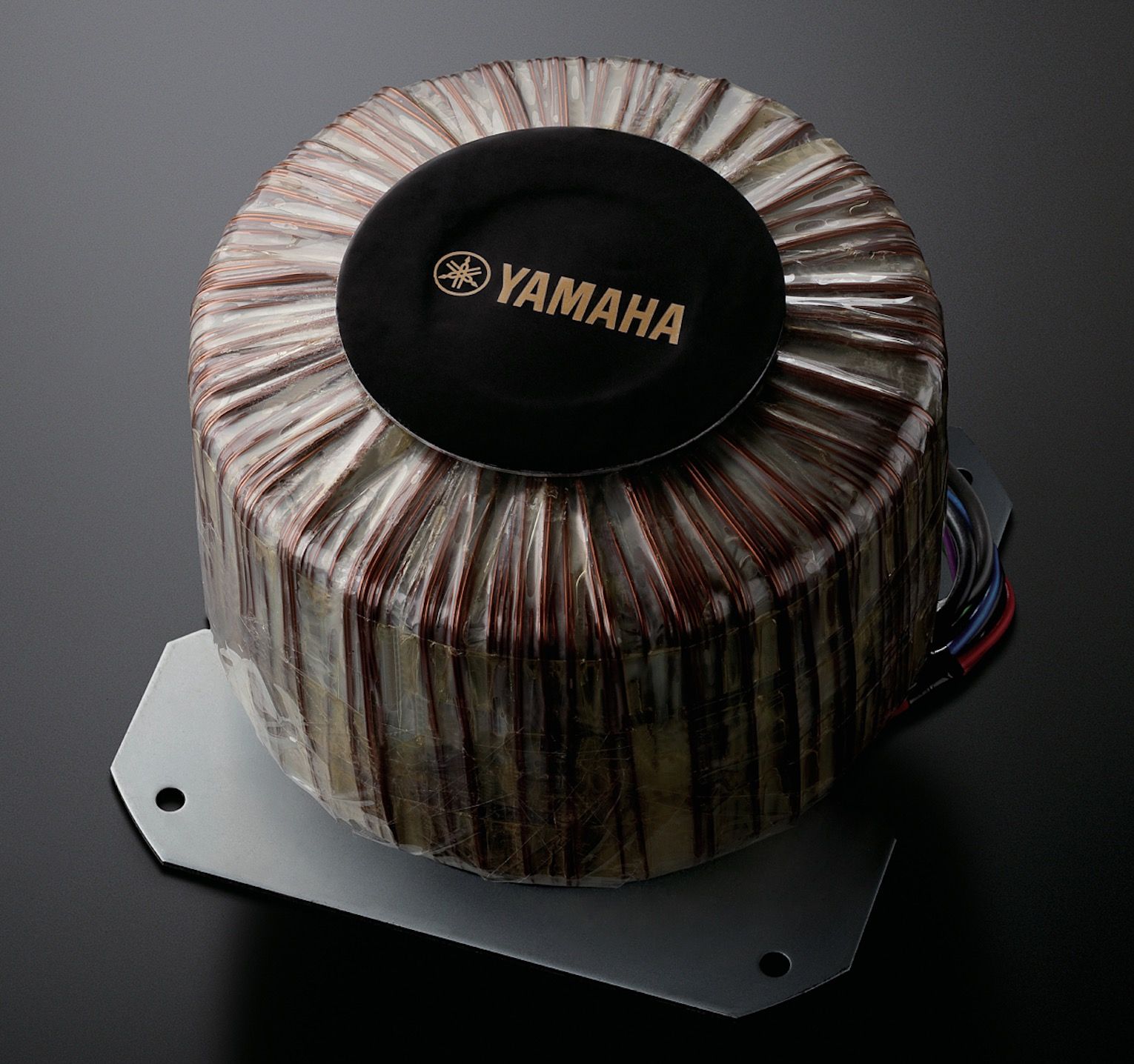
I installed the A-S1200 in my hi-fi system and spent a few minutes just looking at the thing. This box may dominate your hi-fi, your room and quite possibly the street you live in so bear that in mind if aesthetics are important.
The layout of this amplifier, front and back, is classic, traditional and nostalgic. The front fascia has a large Volume knob, a smaller source selector, Bass, Treble and Tone controls (if all of those are set to zero the audio will bypass the tone control circuit) and a Speakers switch because you can hook up two sets of speakers to this one. There’s also a full size, 6.35mm Phones socket for the built-in headphone amplifier, a Mute and Power switches.
The one intriguing control is the Meter option that allows you to turn off the VUs, select peak level monitoring, classic VU mode or dimmer to automatically change the brightness of the meter display. You can lock in the desired dimmed lighting too.
The rear of the A-S1200 chassis provides two sets of speaker binding posts, situated on the far left and right. Alongside the Pre outs (which allow you to hook up a sub) is an Auto Power Standby switch that kicks in after eight hours plus Trigger jacks. Three sets of Inputs run over the top of a pair of MM/MC Phono sockets for vinyl use.
The phono amplifier offers the following settings – you won’t find the following in the manual. I specially requested this data from Yamaha:
Moving Coil:
| MC Input Sensitivity/Impedance | 150μVrms/50Ω |
| Total MC gain | 63.6dB |
| MC head amp gain | 28dB |
| EQ amp gain(MM gain) | 35.6dB |
| Input Capacitance | 100pF |
Moving Magnet:
| MM Input Sensitivity/Impedance | 3.5mVrms/47kΩ |
| EQ amp gain(MM gain) | 35.6dB |
| Input Capacitance | 100pF |
There’s also two pairs of Line Outputs (for a tape deck) and Main inputs. The latter forces the volume to operate in fixed mode which allows you to hook three sockets to a pre-amp or AV amp. You also get an IEC power socket.
I asked Yamaha why there is no Ground pin on this socket. I was told, “The reason why there is no ground pin is the meet safety standard Class2 of IEC/UL/others. This allows us to design the unit the meet safety standards on a global level.”
There will be those out there of a more technical mindset who may want to know more. So just for them, I collared a poor Yamaha engineer who didn’t mange to run fast enough and he replied, “Class 2 requires clearance and creepage distance of hot and cold in primary and primary to secondary isolation for safety. If its not able to keep a distance, double isolation is required. Actually each wire of the primary circuit is double isolated. And in safety standards tests, the distance is strictly measured and the leak current is tested by applying very high voltage. Anyway, it keeps the isolation of hot and cold in primary and primary to secondary. It not necessary to use Ground pin in the socket. This is the regulation of Class 2 in standard regulation, not only IEC but also any other country’s safety standard. Whether Class 0 or Class 2 is required depends on the category of products. Home electronics products need to meet either Class 0 or Class 2.”
So now you know.
One of the most important features of this design is the thing I did not talk about: a built-in DAC. That is, there isn’t one in this box. Some prospective buyers might baulk at this omission but it pleases me no end. Why? Firstly, this is Yamaha we’re talking about here. One of the most enthusiastic bundlers out there. If there’s a chassis out there on the market, Yamaha normally loves to stuff as many features in it as possible. You want an amp? Sure, have a DAC in there too, why doncha? And Bluetooth…and streaming…and a CD player…and DAB radio…and multi-room options…and…Well so it goes on and on.
Now I understand why an internal DAC is so appealing to many. It’s seen as a freebee so there’s that value for money thing. Because the DAC is inside the amplifier’s chassis the footprint is lowered. Ideal for those who are short of pace. There’s no set up involved, that’s already sorted. Ideal for beginners. There’s no need to buy extra cabling. The case for an internal DAC is a strong one.
On the other hand, there’s plenty of reasons not to have a DAC stuffed, cheek by jowl, inside an amplifier’s chassis. Firstly, the cramped conditions inside the chassis means that high frequency noise and vibration moves freely to and from the DAC, veiling essential musical detail. Also, any internal DAC is roped into the same build budget as the amplifier. It has to compete for limited and finite development funds with the star of the show, that amp.
Hence, the DAC’s basic investment is going to suffer. Most of the cash will be spent on the amp because the DAC is only playing a guest star role in this movie. So parts quality will suffer. It will also suffer because of a lack of space. So even if you have the cash to spend on good quality DAC parts, there’s only so much room in an amplifier’s chassis. The DAC has to be designed to fit snugly in the gap reserved for it. Again, sound quality suffers because of it.
Not here, though. And that says to me that the A-S1200 is being treated seriously. Seriously in sound terms, that is. There is a single-minded approach to the design on this product.
A slim remote with a 60 degree arc of fire and a six metre range is included that also handles other equipment in the Yamaha range including a CD player.
So how does it sound?
SOUND QUALITY
I began with vinyl and span Eydie Gorme’s Spanish language album Cuatro Vidas (CBS), backed by the El Trio Los Panchos. I chose the track, Vereda Tropical. Full of romance, yearning, understated backing vocals, low-key percussion and acoustic guitars. Meanwhile Gorme has a purity in the high registers but a husky delivery around the lower frequencies. Frankly, it’s gorgeous. It’s also full of fragility so needs careful handling.
And let’s skip through the internal phono amplifier briefly. It’s fine. Not amazing but it’s useful ‘for now’. Midrange insight was ok not amazing, for example. The freebie phono amplifier remains ideal to get you underway if the budget for this amplifier has emptied your pockets. Grab an external phono amplifier as soon as you can, though.
My first impression using an external phono amp? Very intriguing. You can hear a plan here. There’s a definite, “We’re going to do sound this way. As opposed to that way.”
What you don’t get or, let me put the another way, what there is less of in this presentation is air and space. Saying that, the soundstage is not claustrophobic but there are plenty of amplifiers out there at this price point that infuses the soundstage with more air for detail to move around within. The Yamaha has less of that.
For some, this sonic personality may be a deciding factor right here and now. To reject the A-S1200 on this single factor – as important as it can be to some – would be a mistake, though.
That’s because the A-S1200 offers a trade off. Instead of the air and space that some amplifiers might give you in buckets, the Yamaha provides a host of focus. More focus that you might normally expect to hear, in fact. It can produce a slightly tense midrange but that’s never an issue. It’s a subtle effect as opposed to a hurdle to cross. The focus is the thing, here. And that focus conjures up space. All on its own.
What do I mean by that? Imagine standing in a small room.
Standing in that small room, you inherently lose space to move around. It’s a physical fact. You could feel a little cramped.
But look again at the interior design of this room. The choice of furniture. How that’s been arranged. The furnishings, the use of colour and the sympathetic way the room operates. So, despite the small room, you never feel closed in or restricted here. Cosy, maybe? Comfortable? But not confined.
Hence, despite the small physical space, the room itself feels workable. You never feel you can discern spaces in between objects and items occupying the room.
Hence, the A-S1200 tidies the soundstage. Maybe does a smattering of decluttering. The Yamaha maximises the space it offers. It created the illusion of space even though that soundstage is relatively small. It’s a neat trick.
The upshot is that the small room matters a little less than it might. The focus and precision makes up for it, as it where.
There are several consequences to this affect. To make sure that space is maximised, the placement of instruments and vocals across the soundstage has to be exact. It’s almost as if the producer has said, “Ok and I want you to stand there. Yes there. No, not two inches to the left. There! [pointing]”
Each element of the soundstage is arranged to a plan. The spin off is that bass never sounds pleasantly fuzzy or irritating bloomy. There is a strict element to the bass presentation. That goes for the upper frequencies too. The sense of precision from the acoustic guitars means that string plucks are honed and taught. There’s a real ‘ting’ after each pluck of the thing that enhances the accuracy of the instrument. Similarly vocals increase the quality of their diction.
Now that does mean that the A-S1200 tends to perform at attention. Because space is not abundant, the sense of relaxation and ease is really not there on this track. The Yamaha expresses this track with a flourish and precision of a set of castanets instead of a lazy guitar strum. Upper mids and treble are never bright or forward yet they are direct and controlled. Although, there may be a reduction in emotion and heart, you cannot fault the A1200 for its sense of accuracy. This effect will be of interest to both fans of classical and jazz recordings.
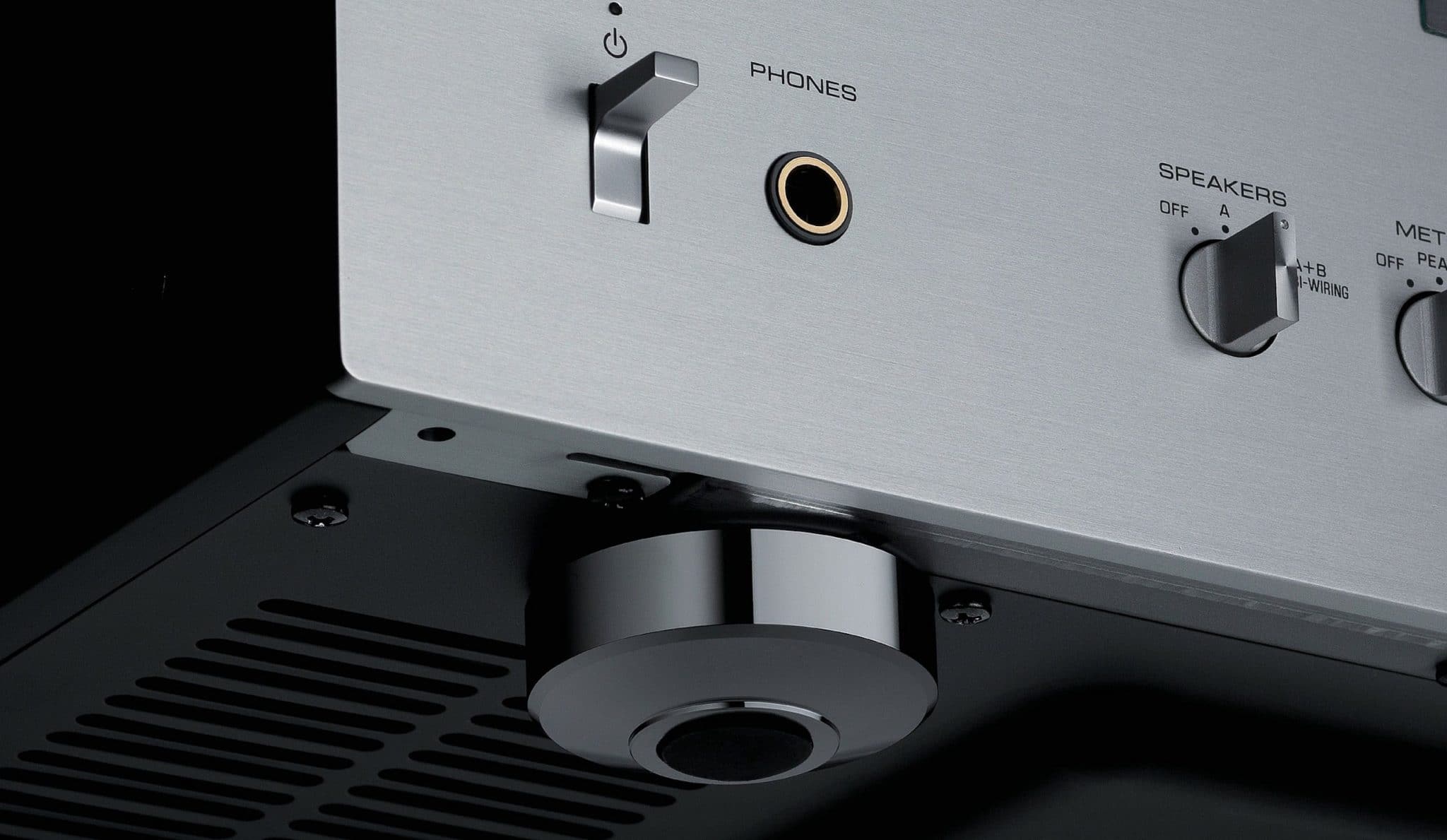
Next I went for something rather higher in energy terms. Picking the 2008 Edsel CD box set, Ian Dury & The Blockheads: The Stiff Singles, Promos Videos and Peel Session, I selected the single, Hit Me With Your Rhythm Stick.
Again, there was the reduction in soundstage space but again, the Yamaha created its own space and lessened the effect.
In general mastering terms, this recording was a little forward around the upper mids and the A1200 made sure you knew about it. It never tried to hide the fact. Because the Yamaha is generally lean in its sonic approach, it will push the mids and treble towards a forward presentation without ever actually going there. Hence, if you play a piece of music has a slightly forward mastering, the Yamaha will push it over the edge. It’s not forgiving in that way.
Yet there was plenty of detail on offer here. Bass was a little lean but full of impact while the sound moved at quite a pace. The sound never dragged or felt sluggish.
What I really liked about the overall presentation from the A-S1200 was its ability to dig out even the most subtle of detail. For example, I never realised just how amazing the bass line is on this track. It was quite the revelation. The bass guitar was very easy to follow via the Yamaha. I could say the same about the piano which was wholly accessible by the ear through the Yamaha.
Moving to the vocal jazz of Carol Kidd and the Linn Records album, Dreamsville, you could hear the exacting nature of the presentation from the Yamaha but, at the same time, no detail was excluded here. That included the delicate cymbal taps. A cool air surrounded this album but all of the sonic ingredients were featured within. Nothing was excluded. Nothing was left out here.
Listening to the same album via the built-in headphone amplifier continued the personality. Often, an amplifier and its built-in head amp can present totally different sonic personalities. Not here, the sound continued from th speakers to headphones. A lean yet strong bass, focused mids and accurate vocal delivery. It was all present.
CONCLUSION
I’ve reviewed many Yamaha amplifiers over the years but the A-S1200 is by far the most interesting and intriguing I’ve ever heard. It’s also the first that really tries to come to grips with sound, in an audiophile manner.
How it approaches sound is wholly fascinating and because of its sonic decisions, it might not be for everyone but this amplifier will, I’m sure, gain many friends.
More than anything, what I like about this amplifier is that it offers a sonic choice. It recognises that we are different and not everyone wants the same sonic presentation. There is room for all and this Yamaha amplifier supports that.
I can imagine that this amplifier will generate a passionate fan base in a short time. In fact, I’d call this amplifier a future cult favourite.
YAMAHA A-S1200 INTEGRATED AMPLIFIER
Price: £1,999
Website: uk.yamaha.com
GOOD: focus, midrange precision, pacy bass, build quality, detail, VU meters!
BAD: soundstage size, slightly tense mids
RATING: 8
[Don’t forget to check out my Patreon Page at www.patreon.com/audiophileman, for exclusive editorial!]
REFERENCE
Origin Live Sovereign turntable
Origin Live Enterprise 12″ arm
Van Den Hul Crimson XGW Stradivarius Cartridge
Benz Glider MC cartridge
Ortofon Cadenza Bronze MC cartridge
Icon PS3 phono amplifier
Aesthetix Calypso pre-amp
Icon Audio MB845 Mk.II Monoblock Amplifiers
Quad ESL-57 Speakers with One Thing mod
Blue Horizon Professional Rack System
Harmonic Resolution Systems Noise Reduction Components

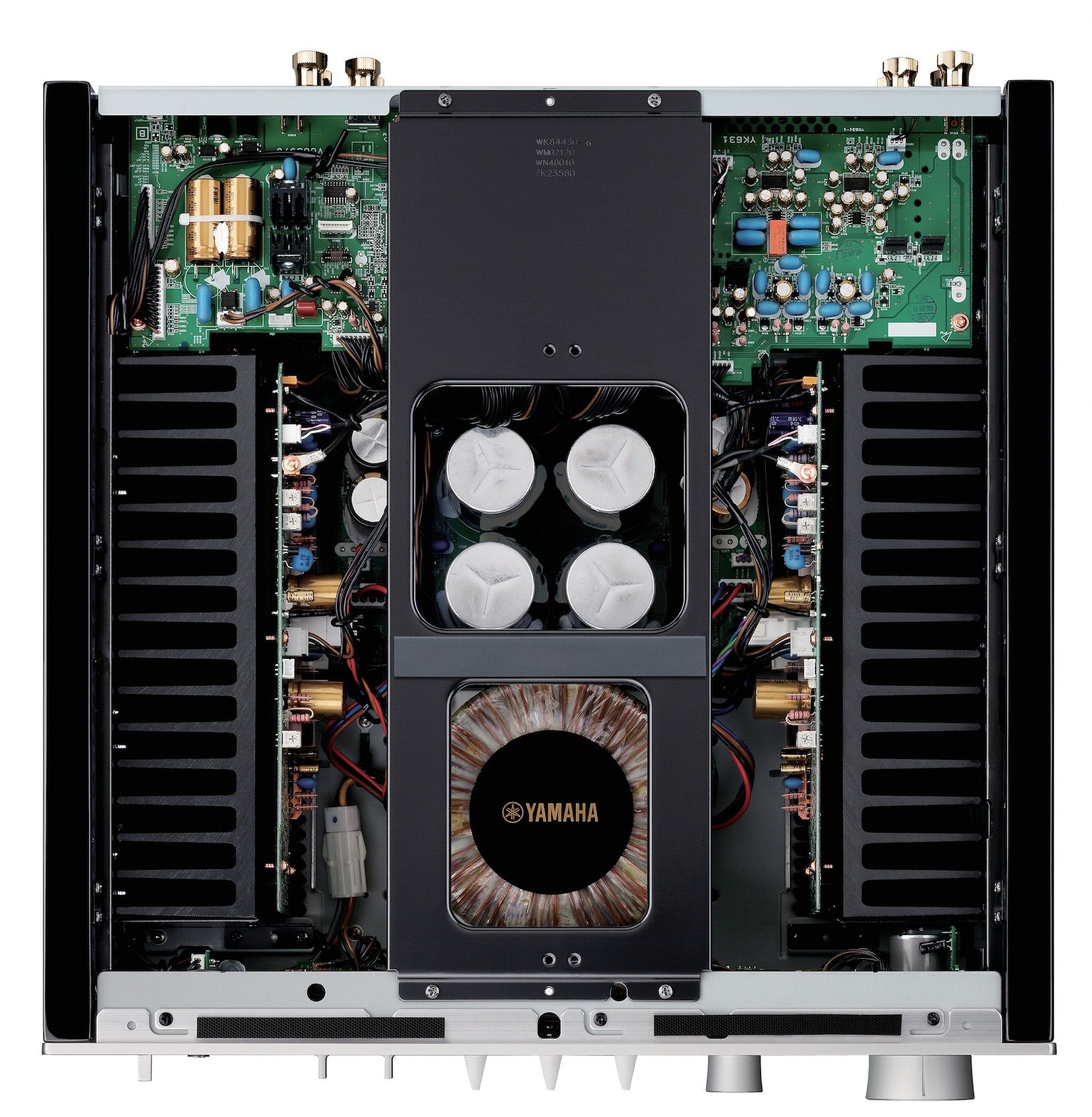
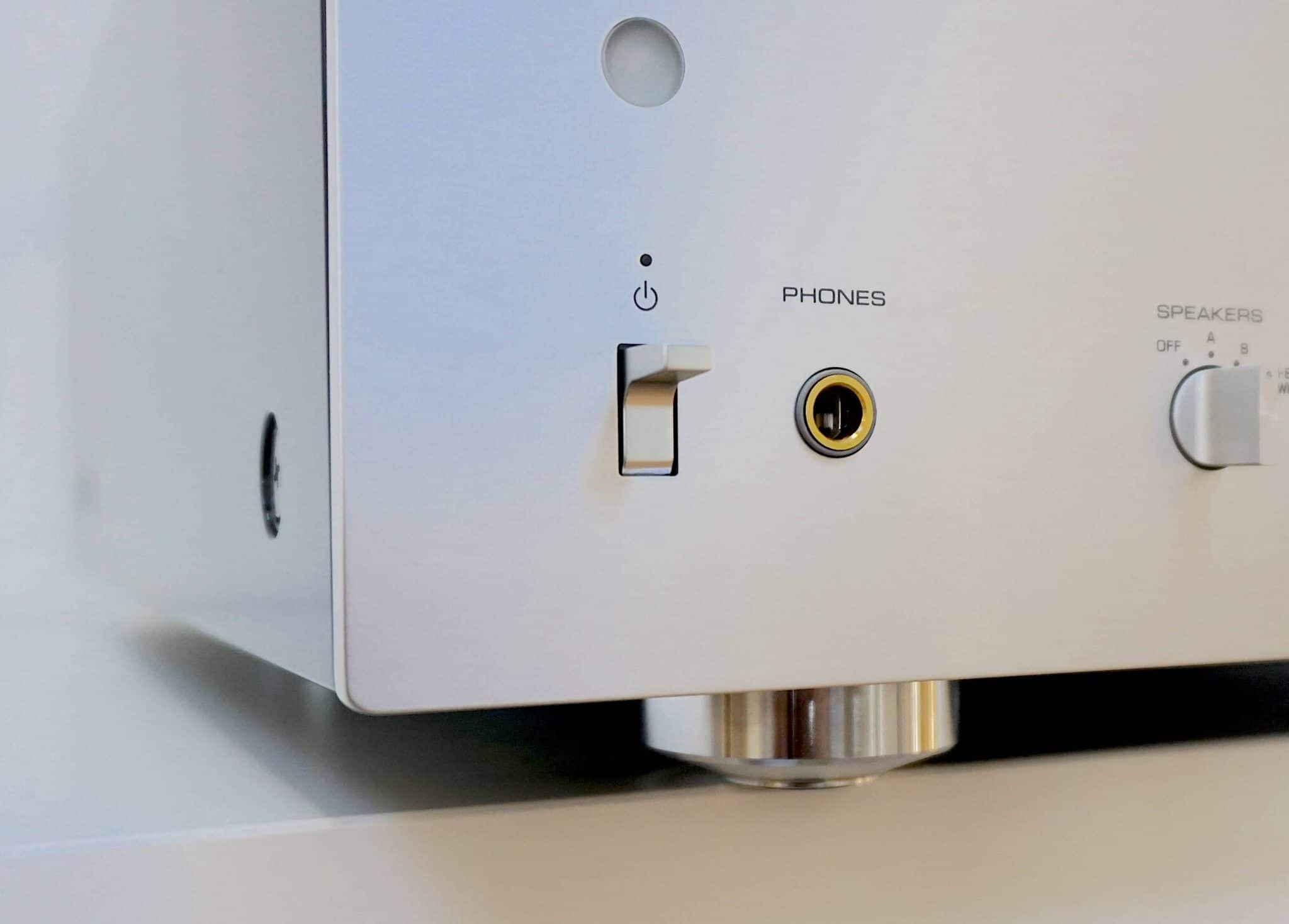
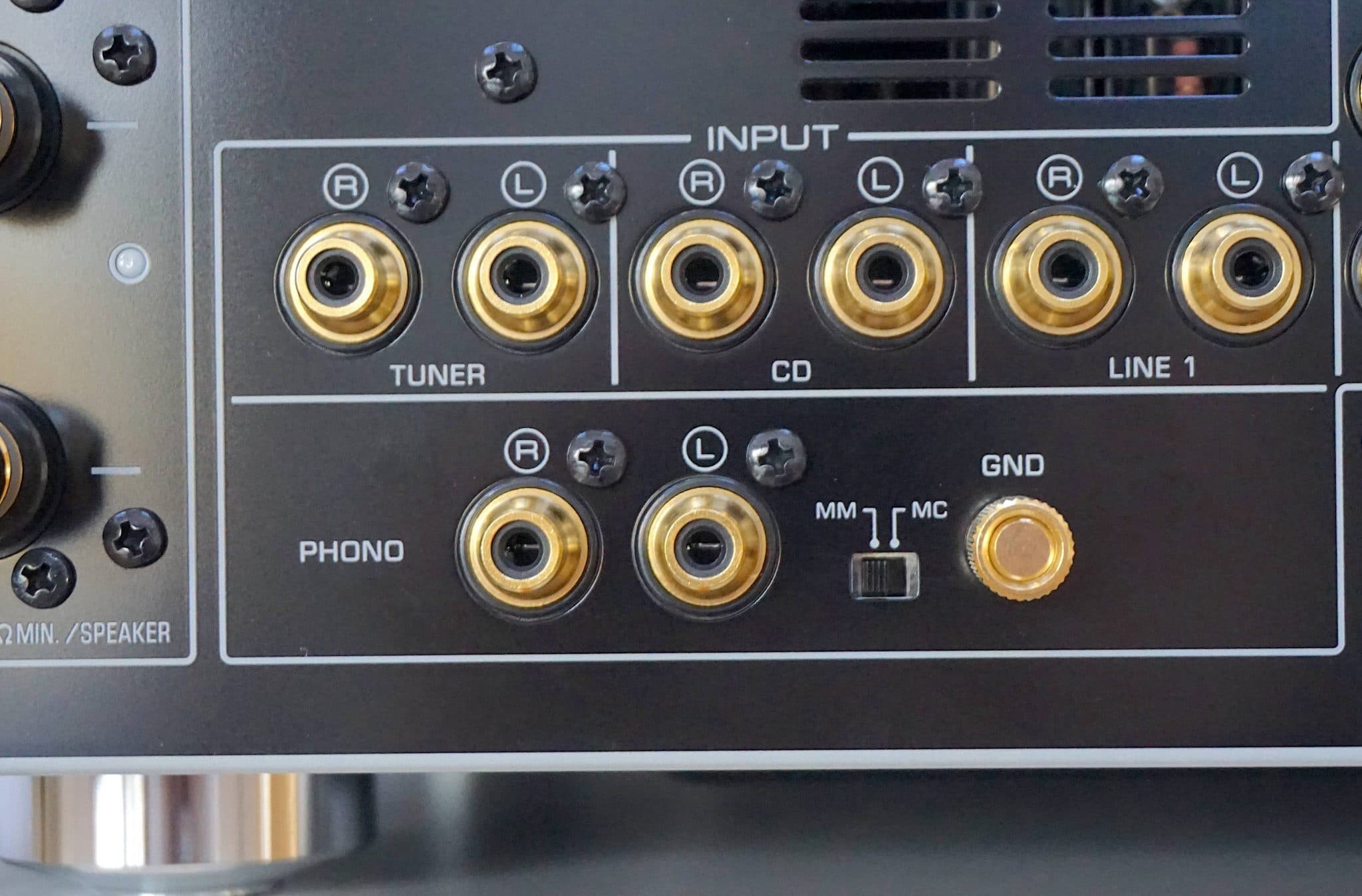
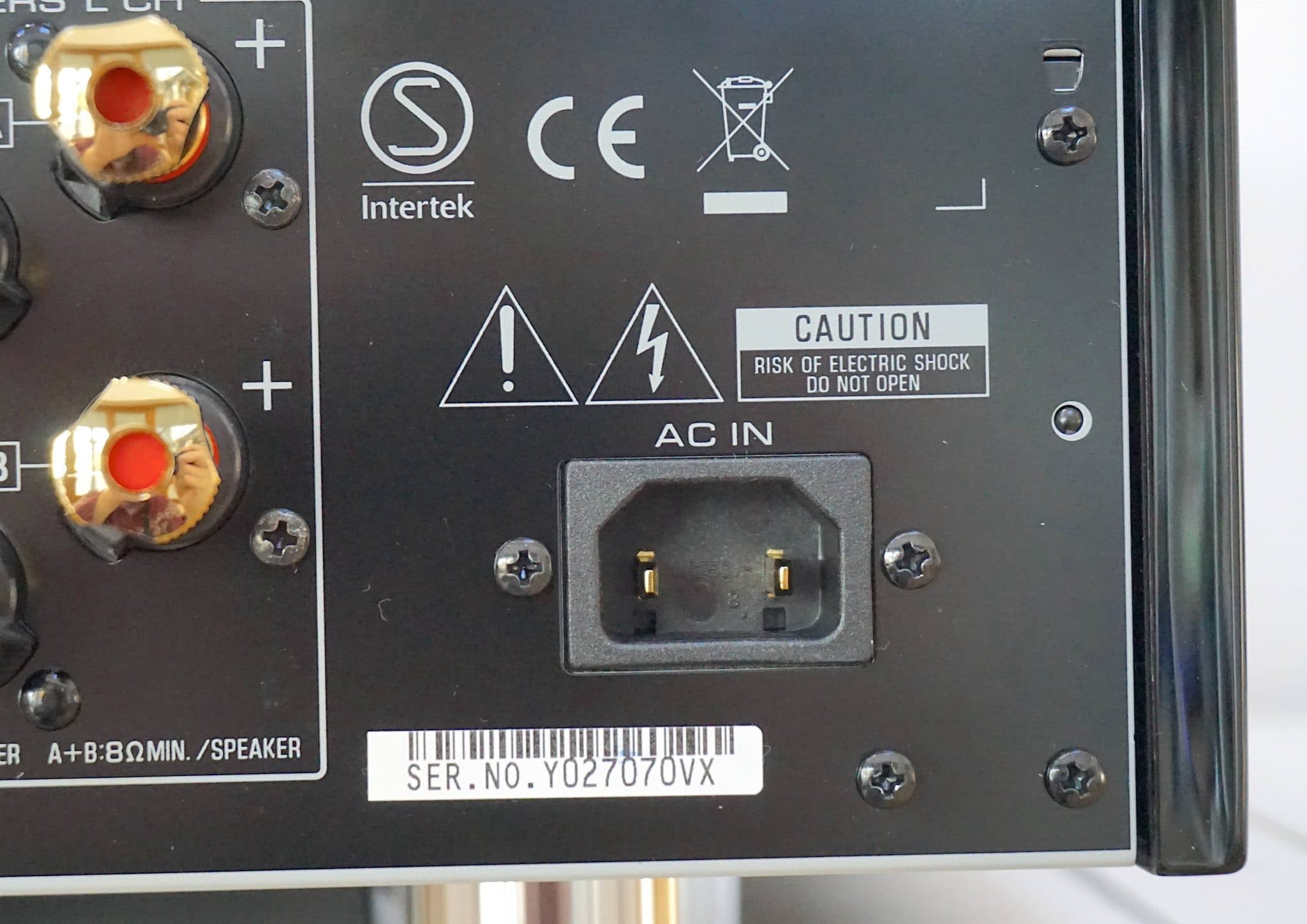
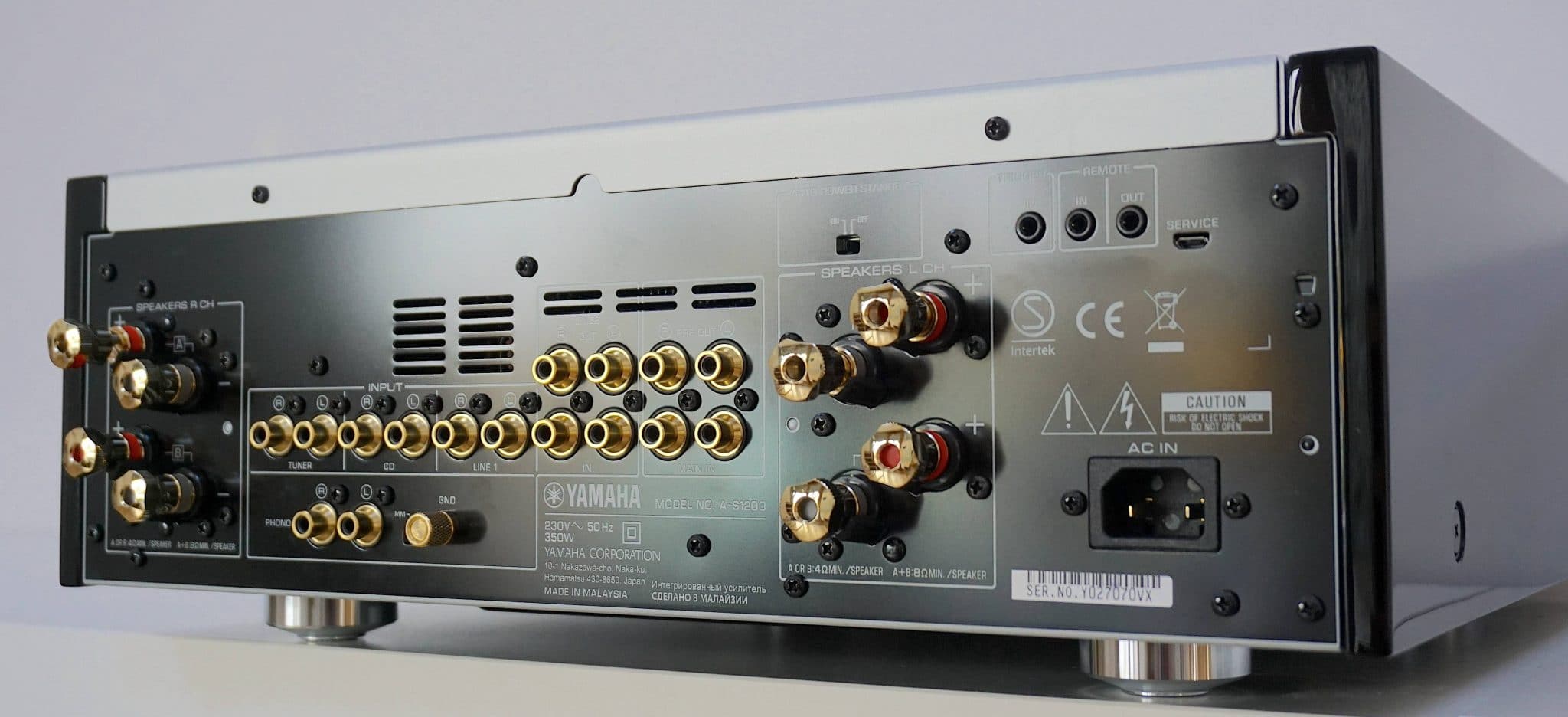
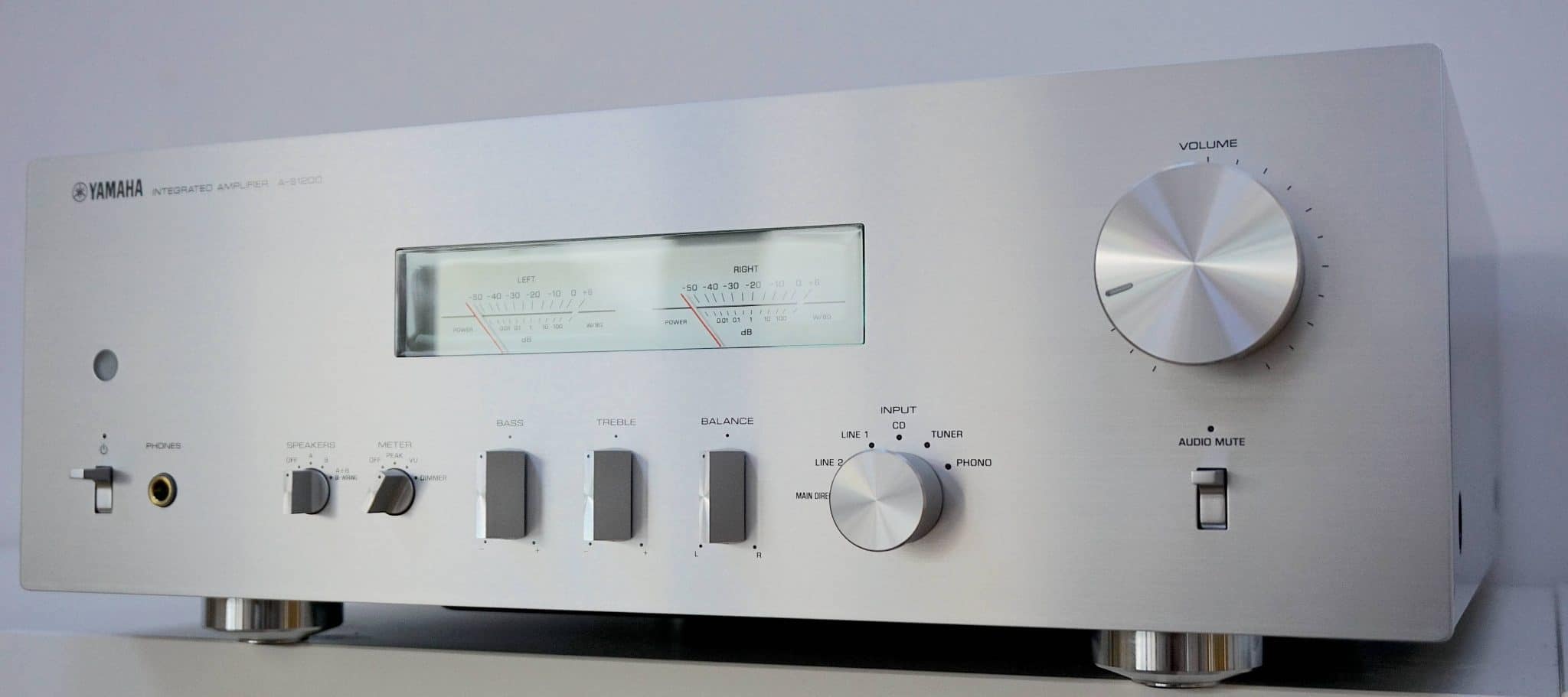
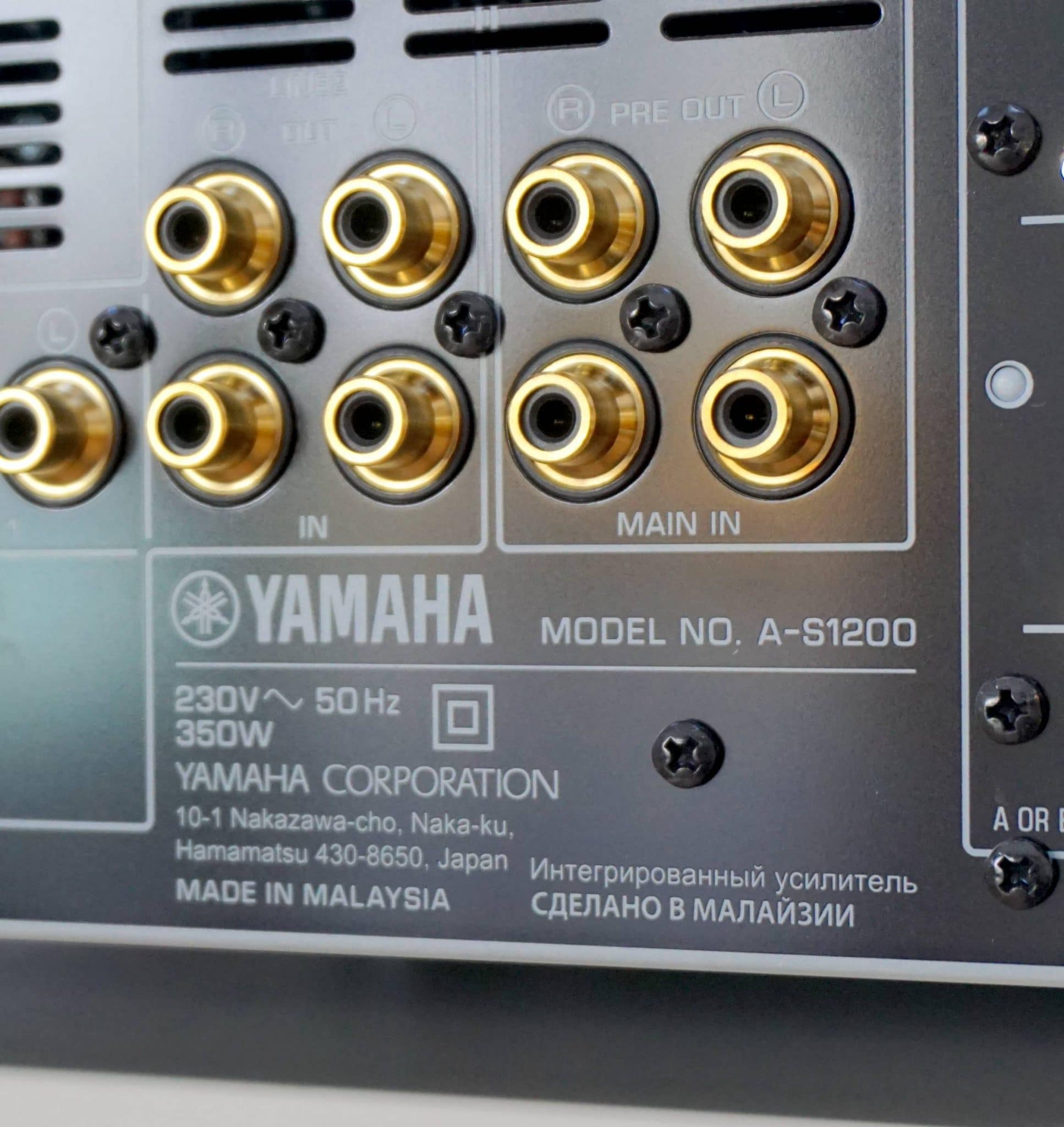
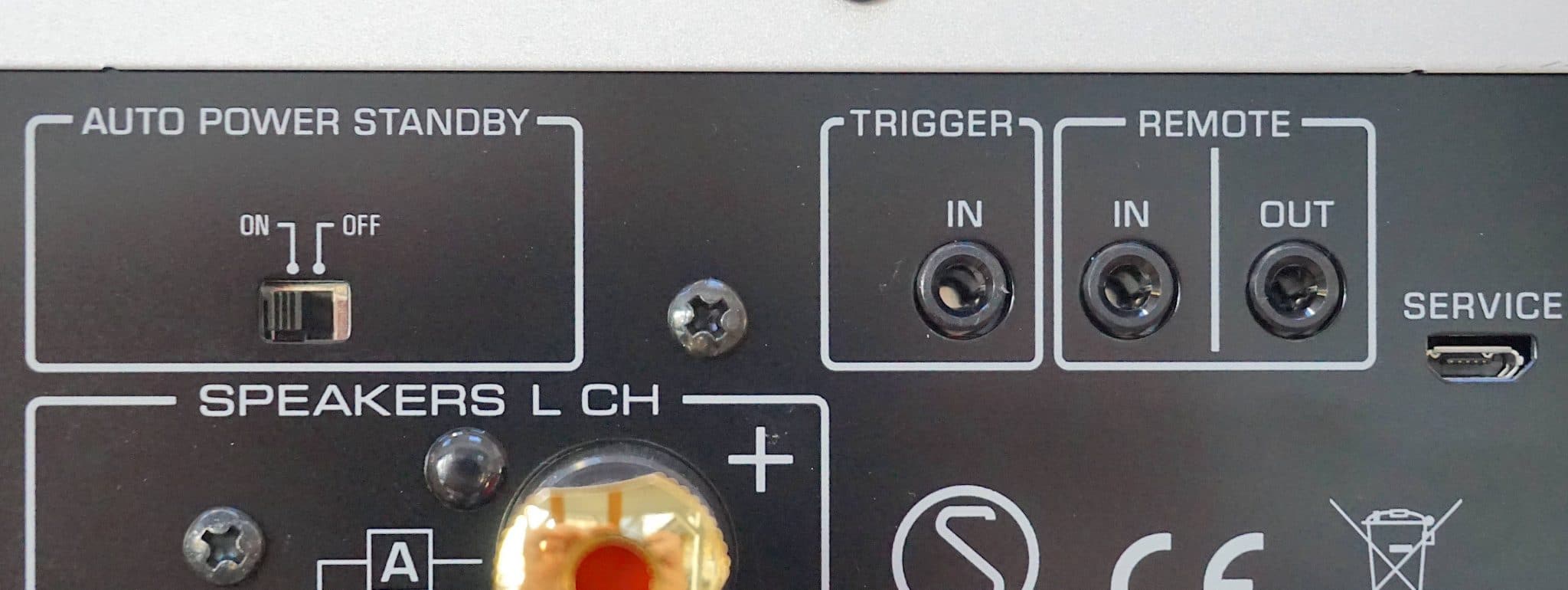
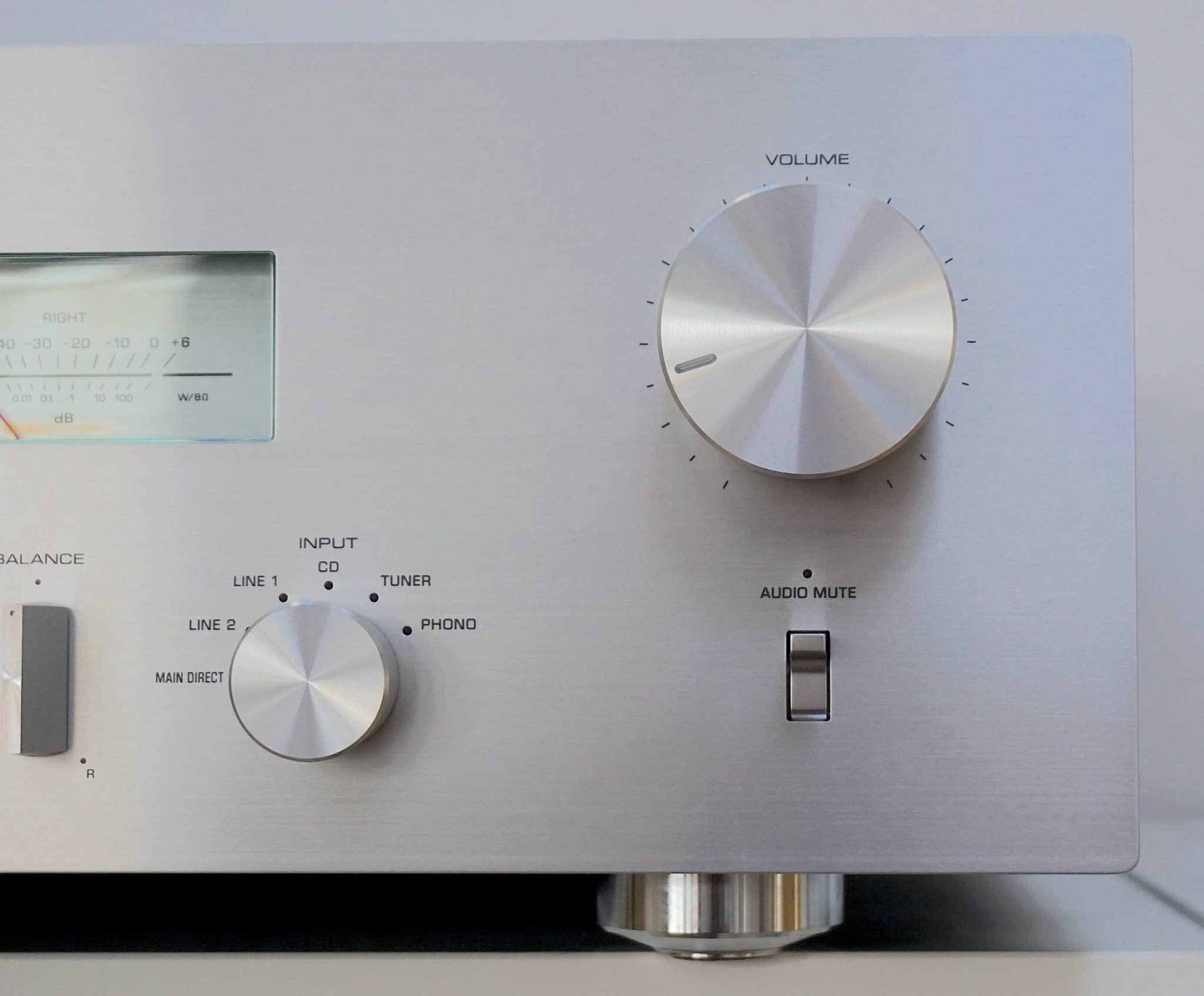
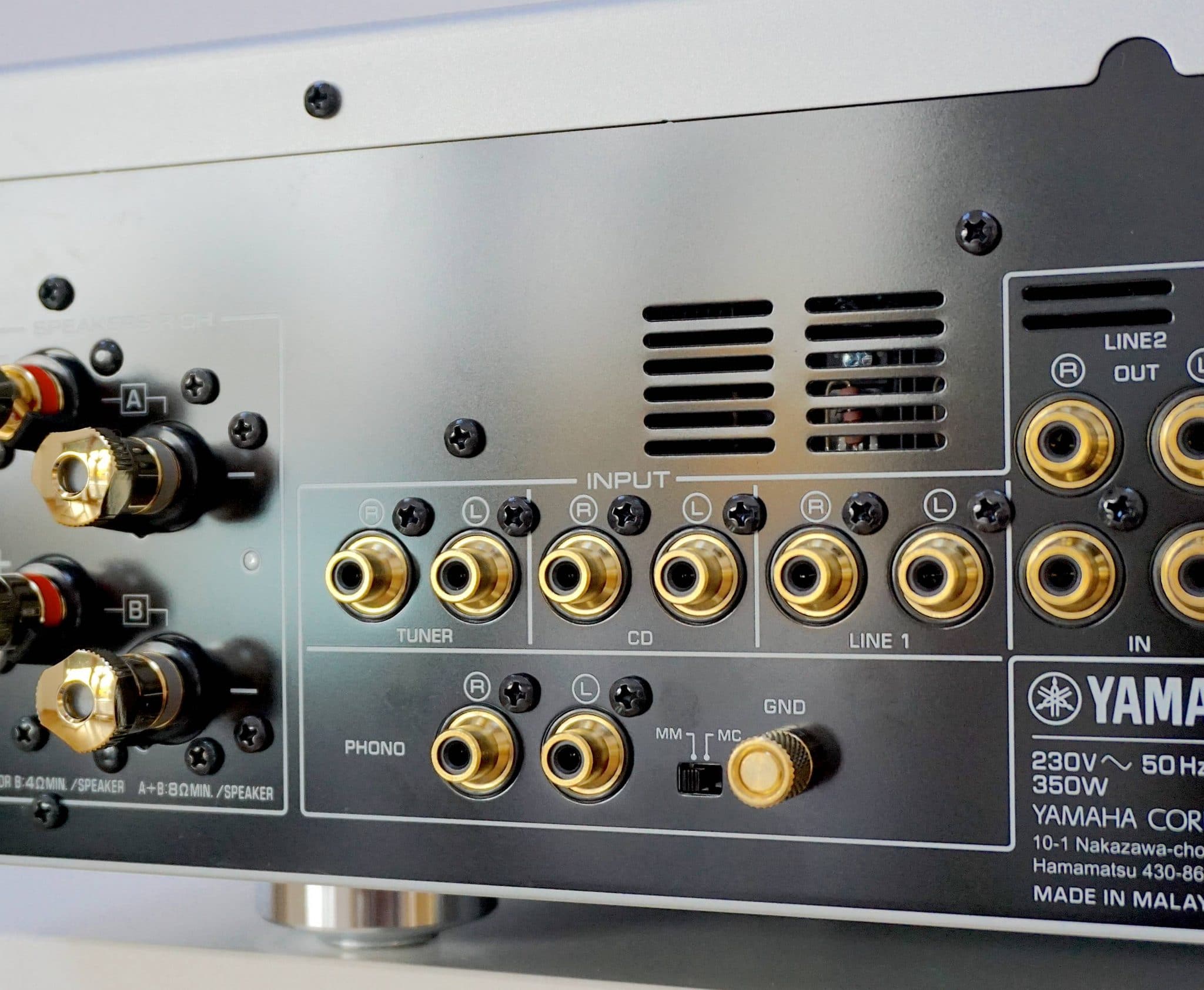
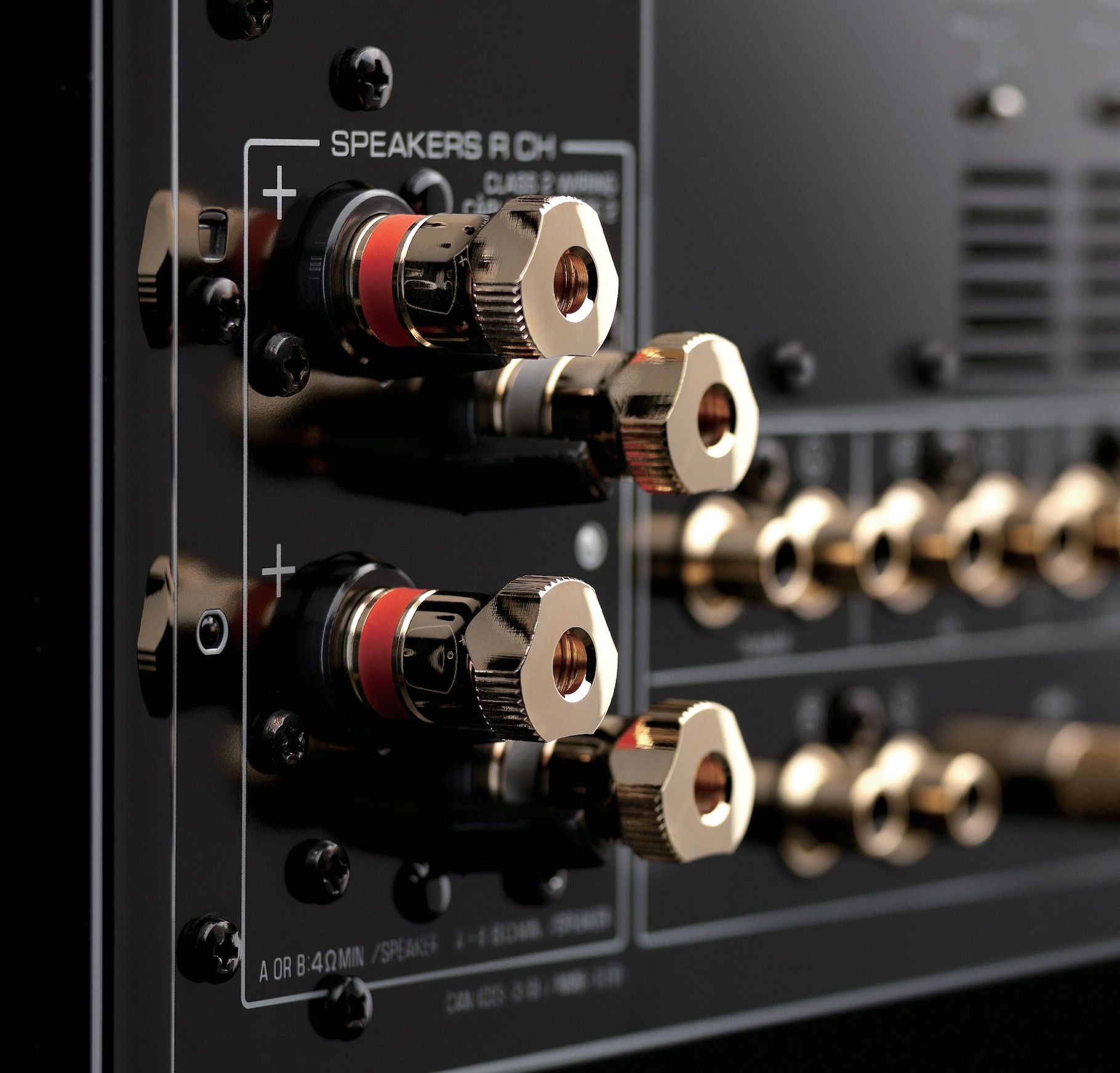

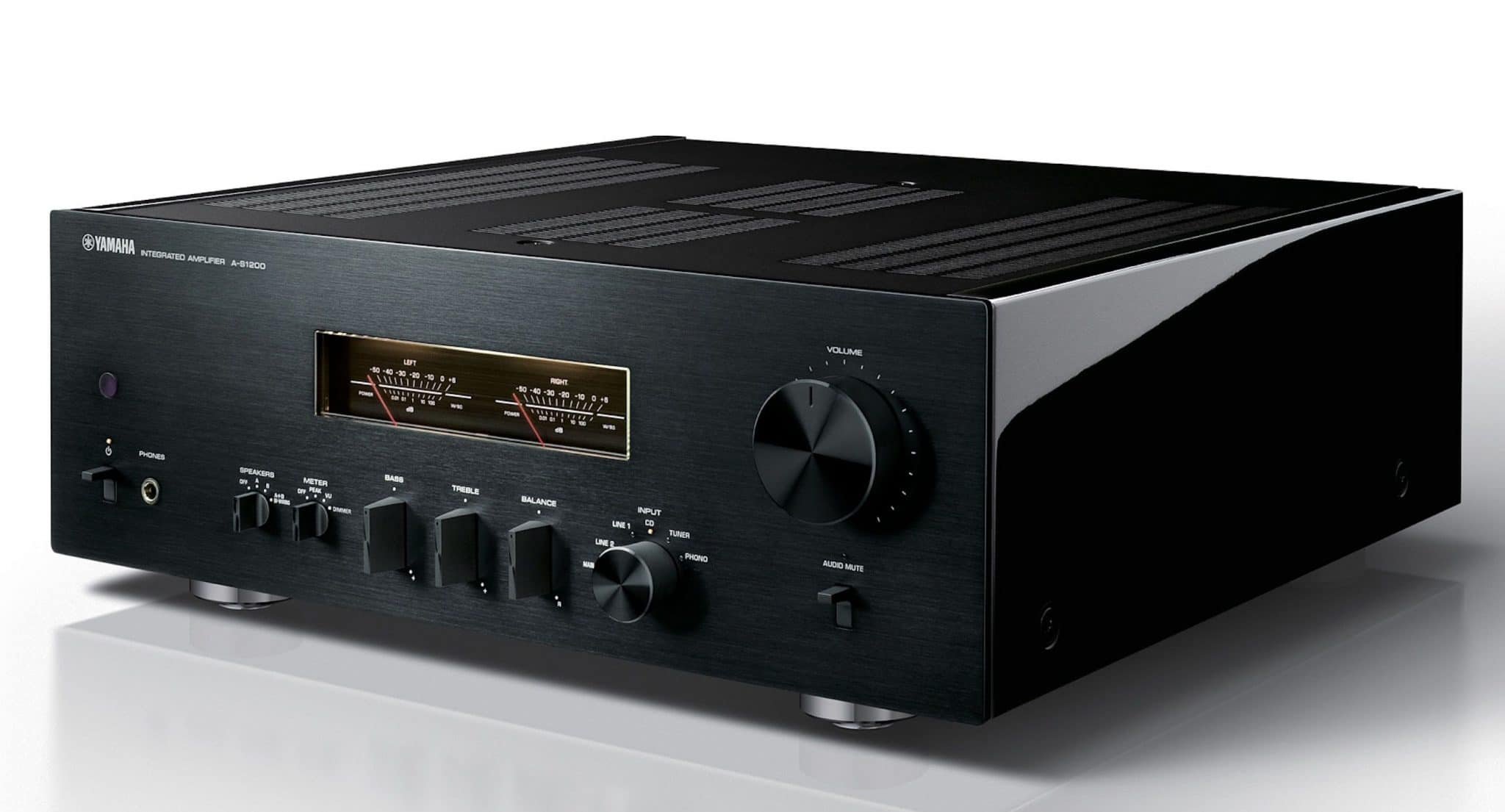
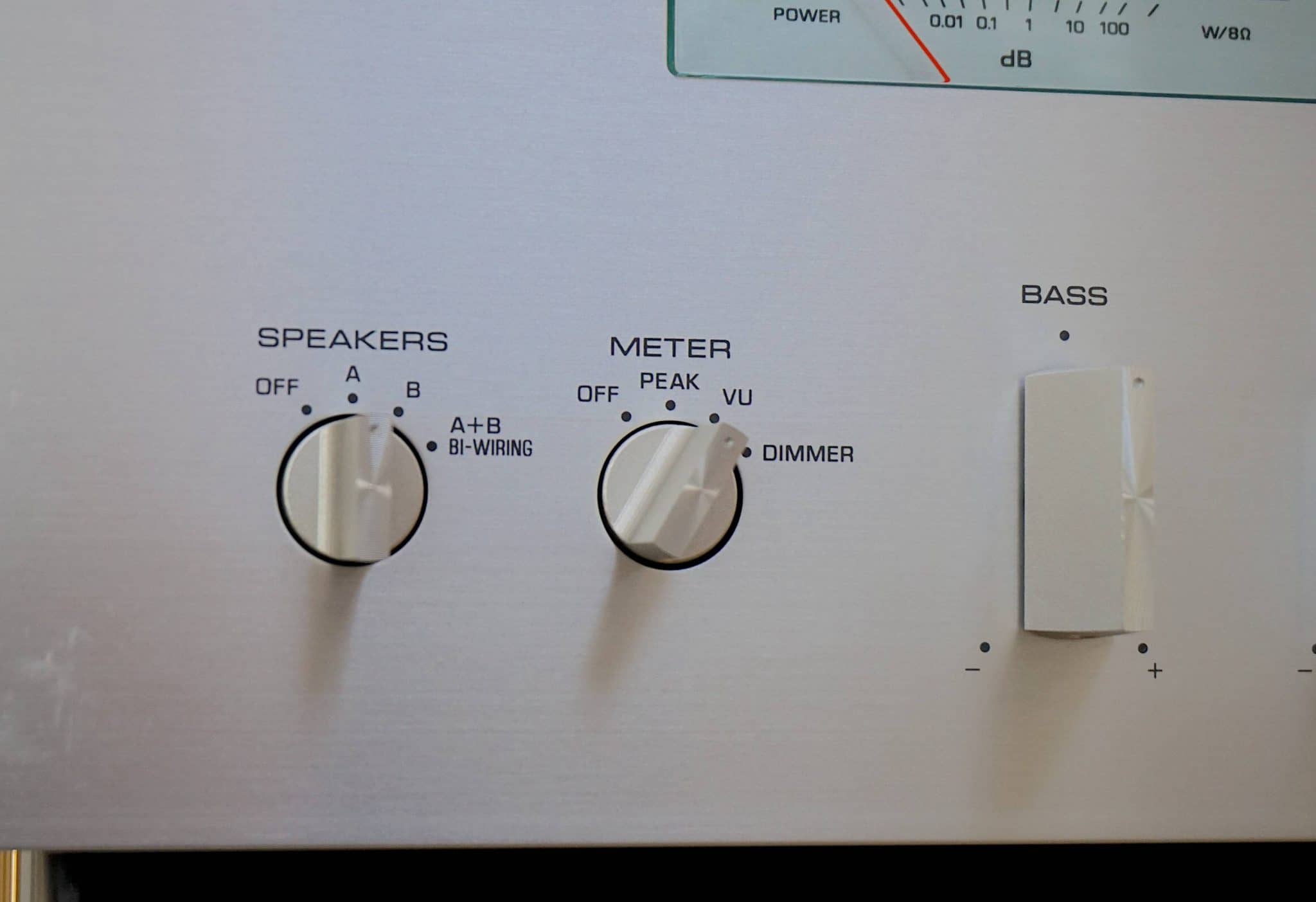
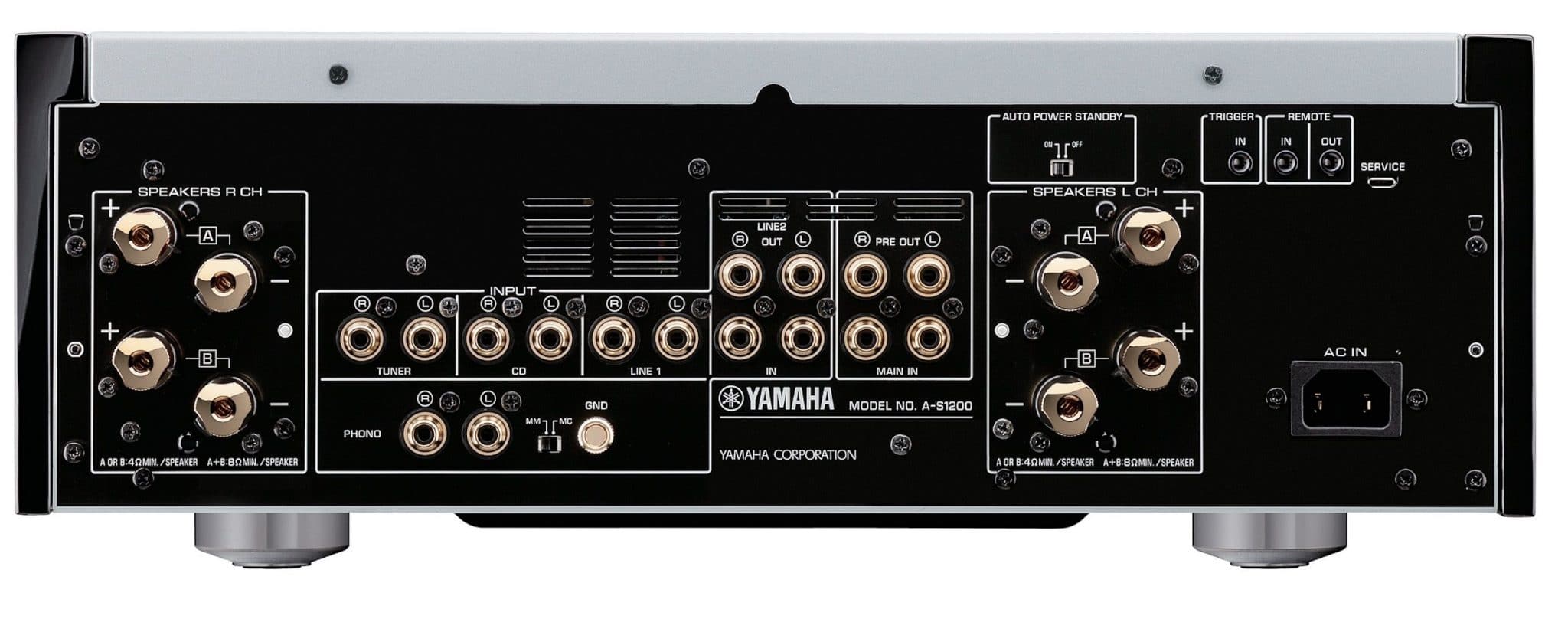
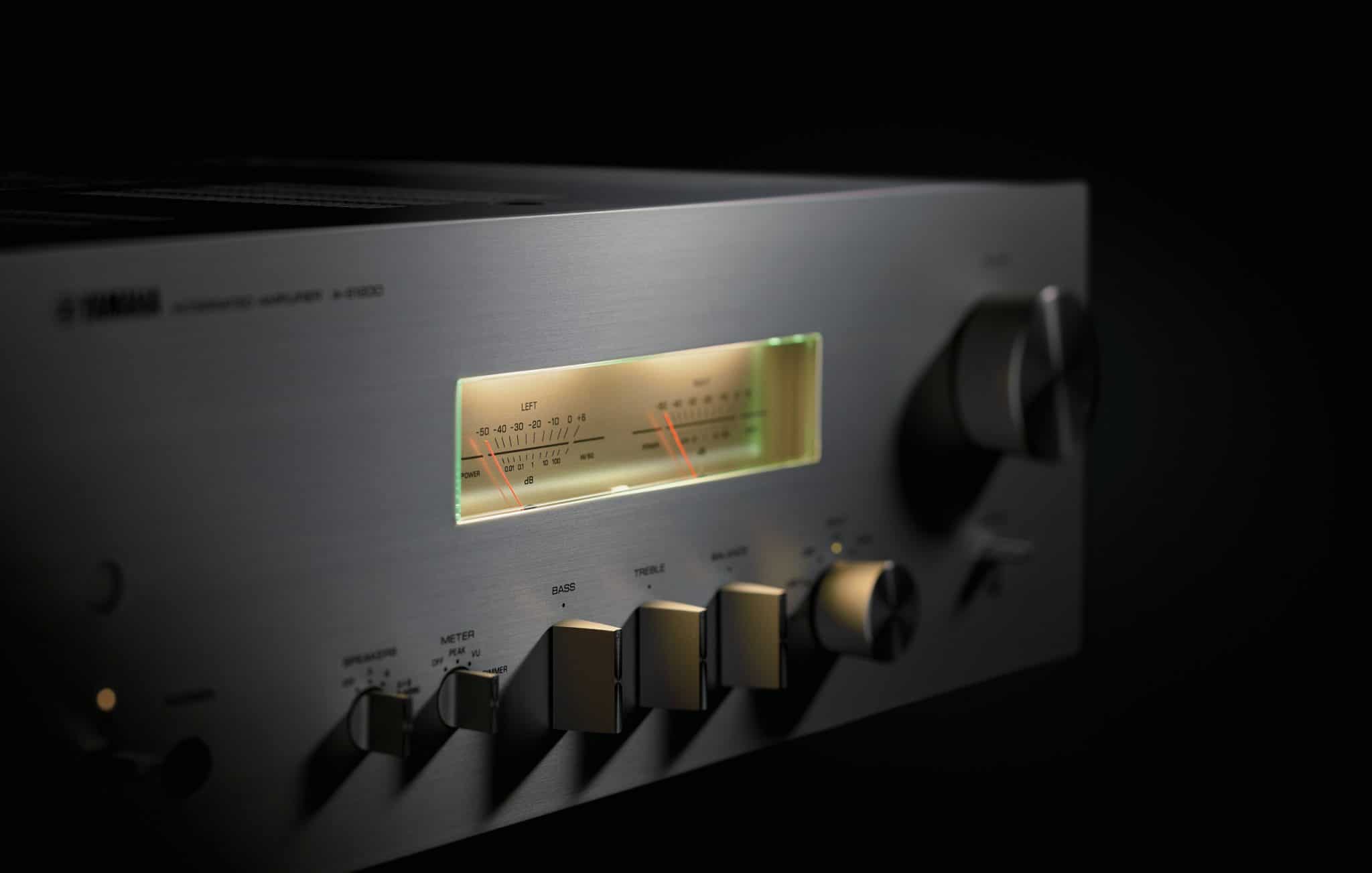
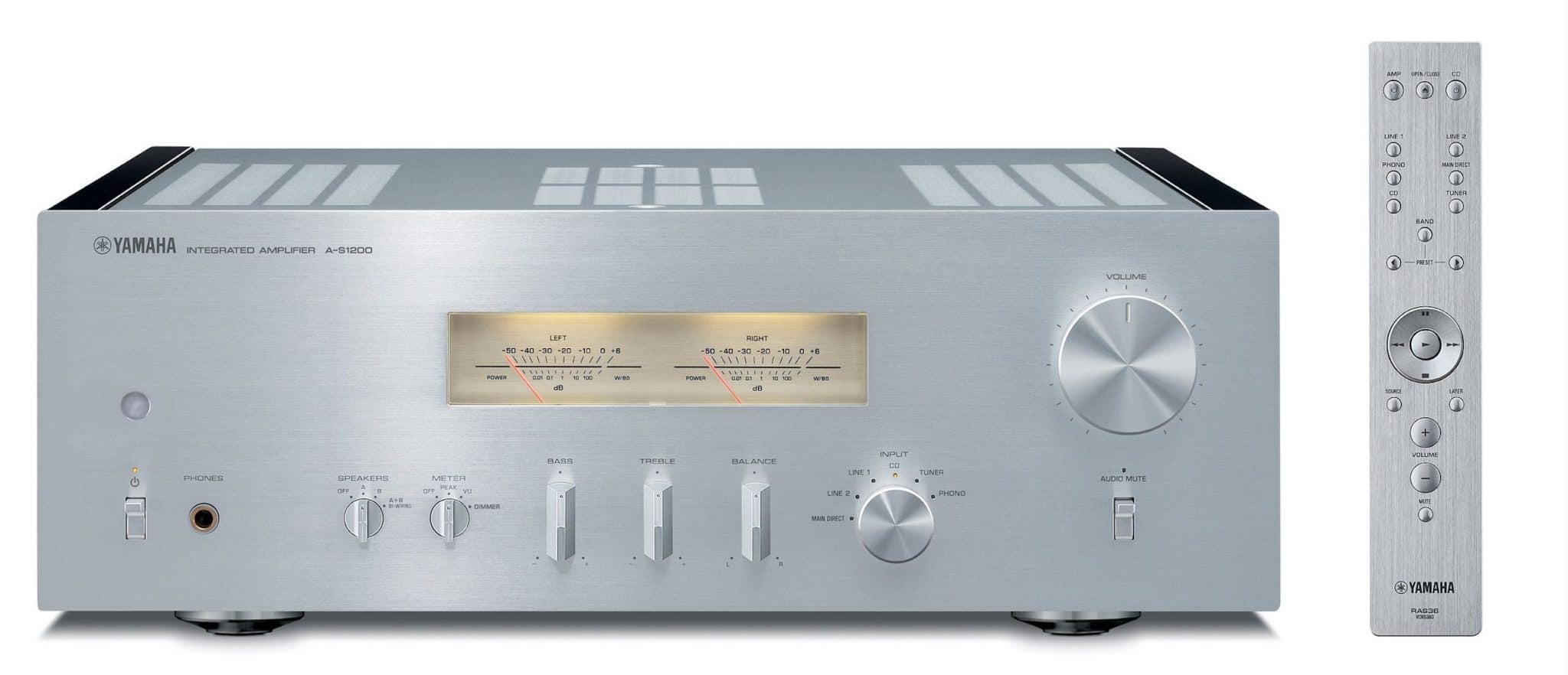
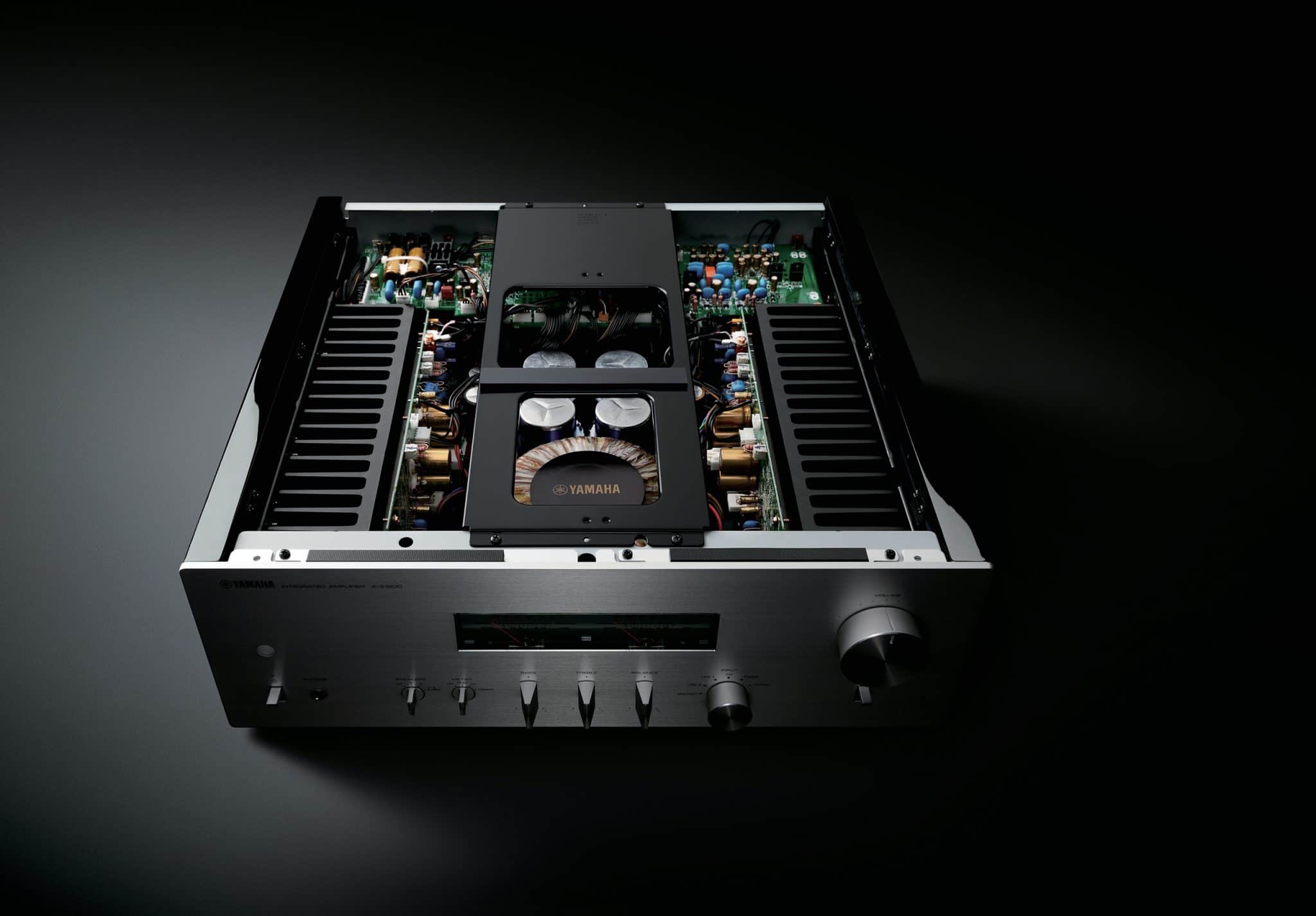
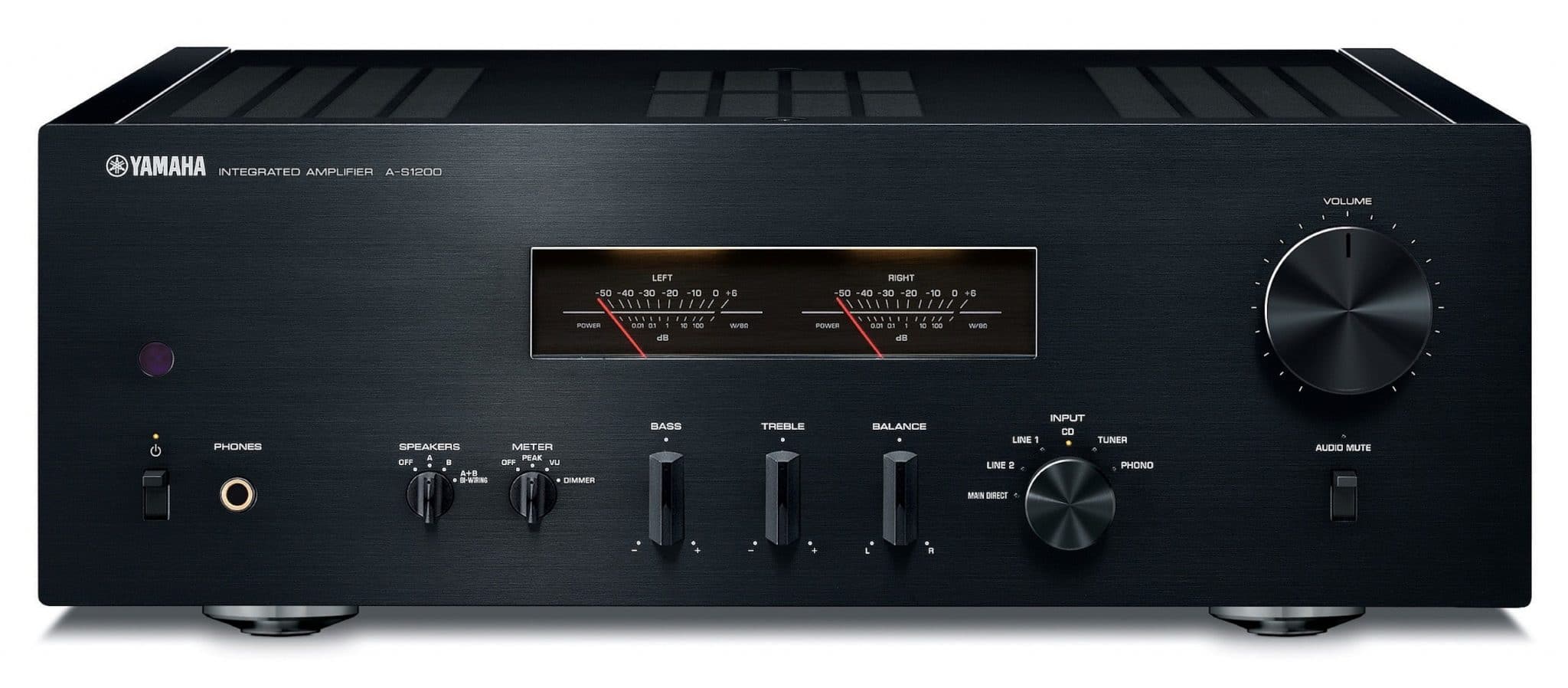
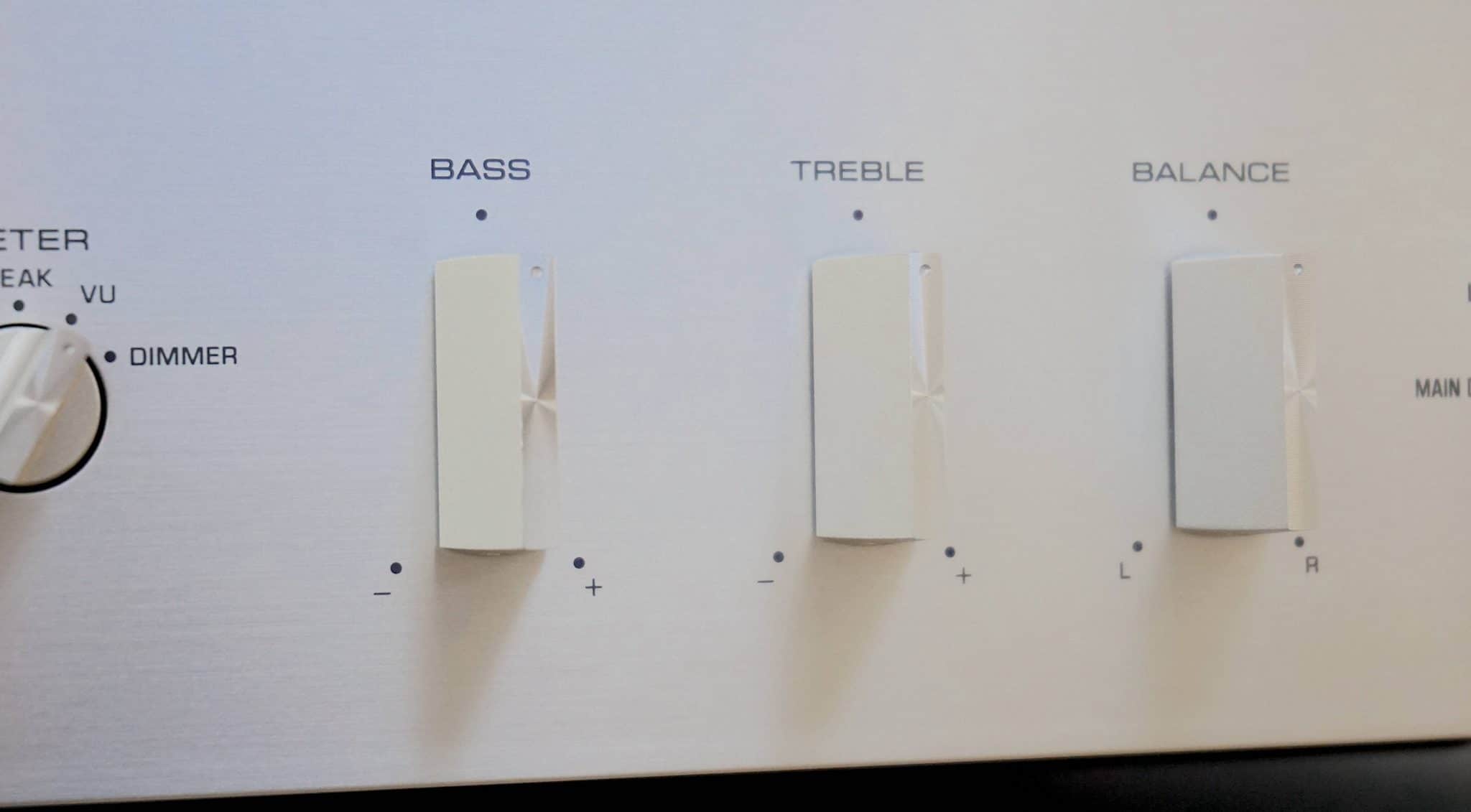
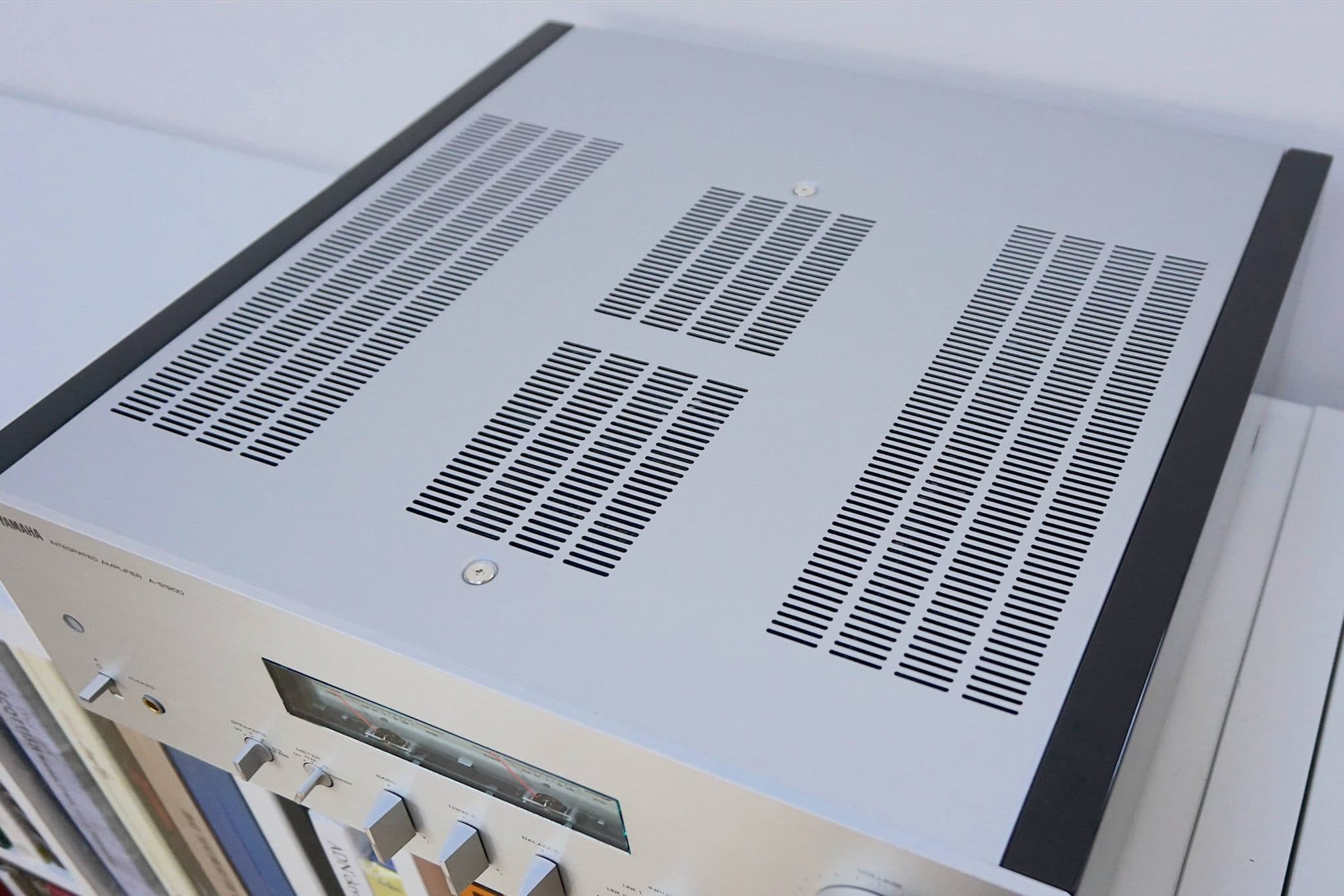
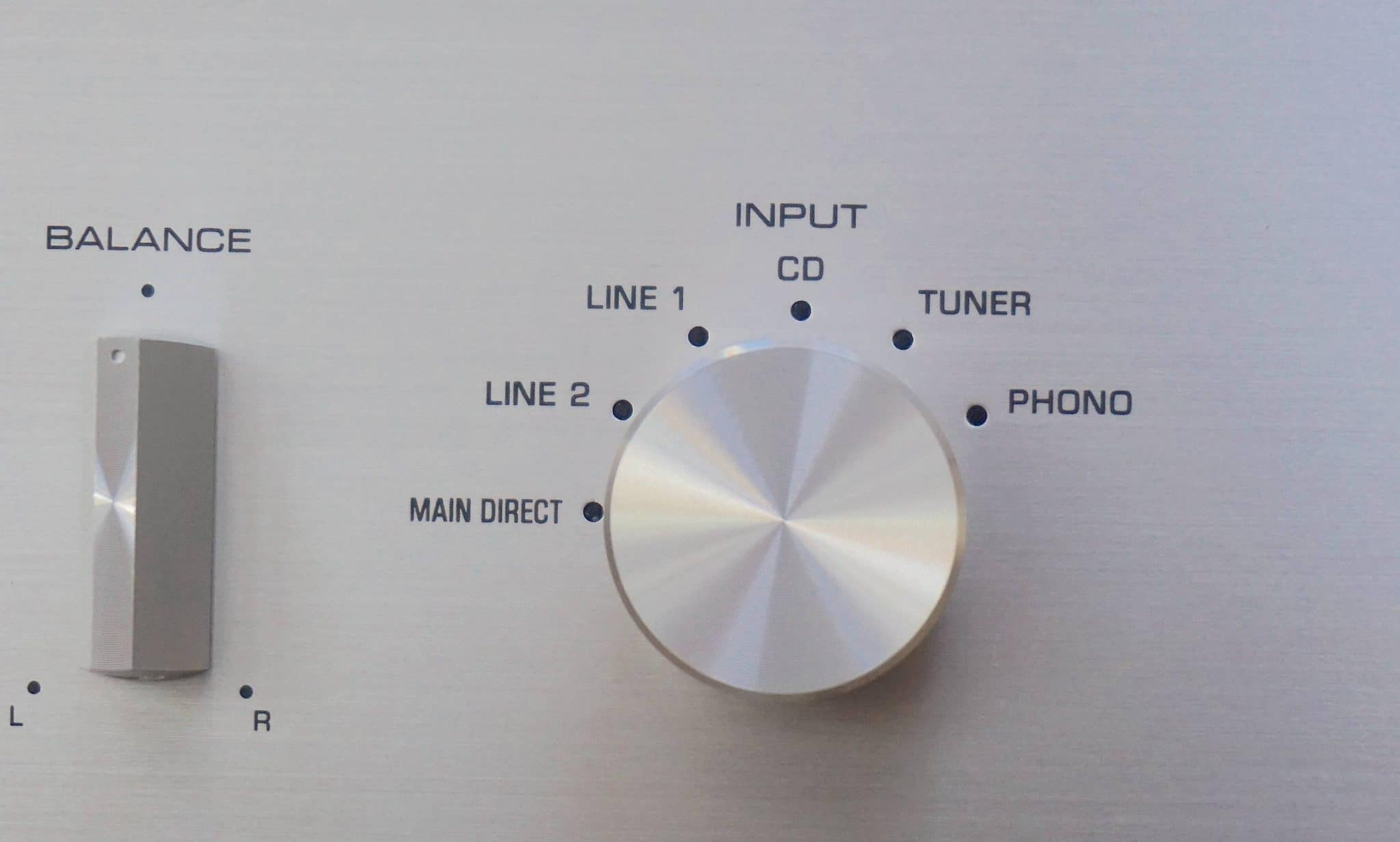
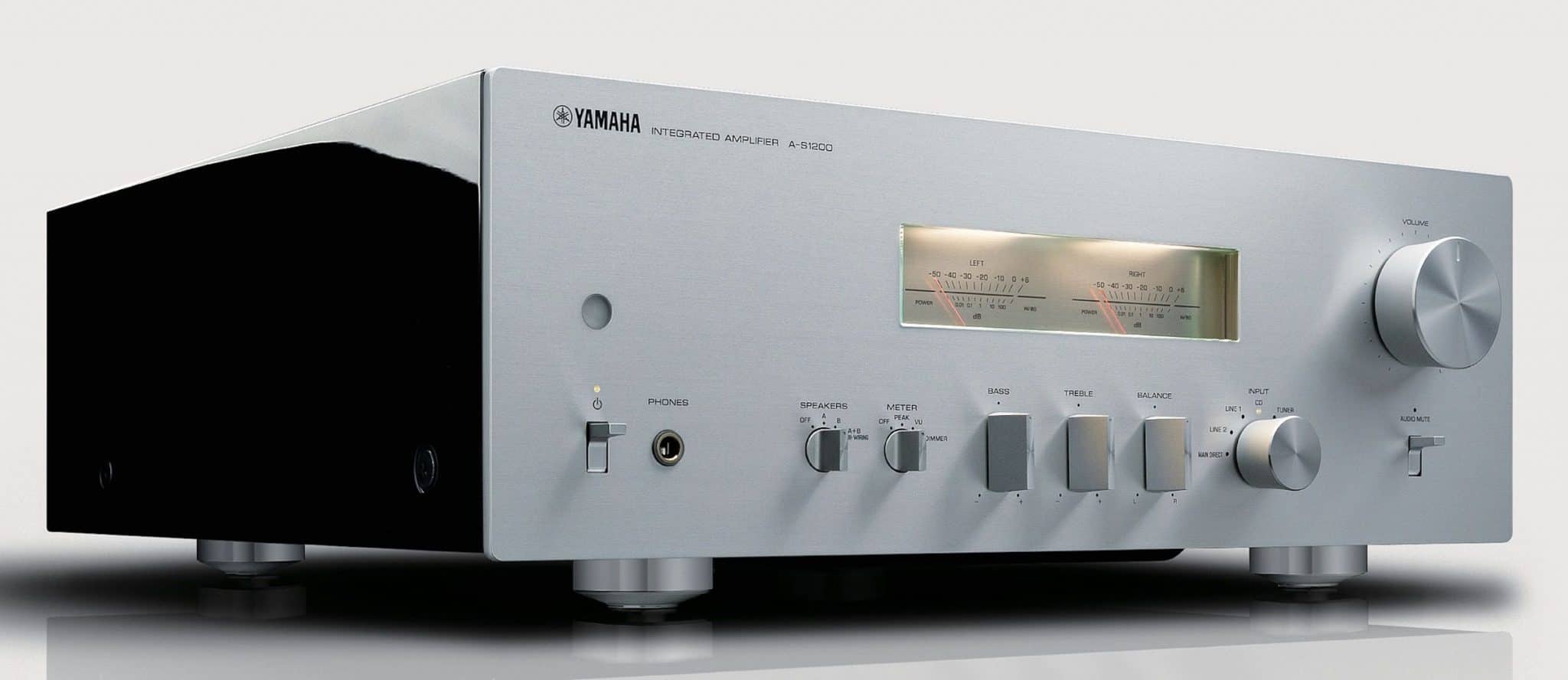
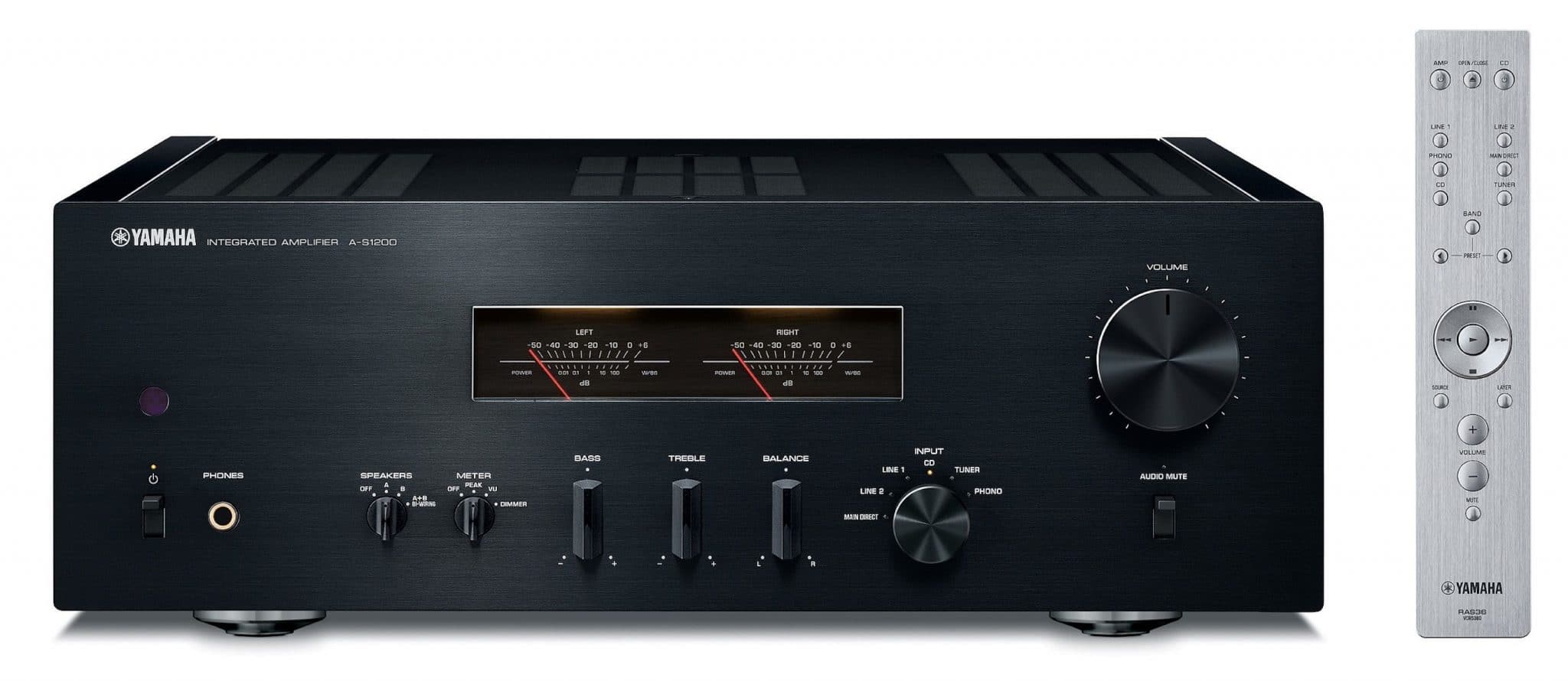



Paul:
At-the-end-of-the-day, The A-S1200 is a “Glorified” A-S801 for $1,800.00 more. The 801 will give you virtually the same soundstage, focus, details and control that the 2100 will give you…more or less, but, more, at $1,800.00 less.
The 1200’s phono section is simply a variation of the 801’s phono stage if not an equal…so, why include it if it is perfunctory, at best?
Your assessment of not having a built-in DAC is facetious because with modern design, engineering and manufacturer, a built-in DAC is just as good as a stand-alone DAC.
The 801 as a superbly, implemented ESS Sabre DAC which is quite fine…especially, hook-up to a Cambridge Audio CXC.
The 801 remains at: $899.00…and, at-the-end-of-the-day, it remains Yamaha’s most bank-for-the-buck.
Hi Spensor – your devotion to the 801 is noted.
I found the phono stage much better on the 1200. On high impedence headphones there is audible hiss on the 801s, but its dead silent on the 1200.
Paul:
I, also, own The Pioneer Series 20’s Tuner, and Integrated Amp. Each & both are Works-of-Art!
Hi i have as 801 yamaha and i want tolearn if buy to as 1200 new i see very different for sound if power.My speakers is new focal chora 826 only music without sub.Thanks.
I would say so, yes. And if you like Yamaha in sonic terms I don’t think you’ll be disappointed.
Τhanks veru much for answer.
Menelaos:
There is the likelihood that Yamaha will be replacing the 801 with a 901 (?) sometime in 2021? This would be realistic as Yamaha already introduced their new line of Integrated Amps and then,their AV Receivers. Be that the case, I’d wait to see what the 901 might offer in terms of sonics, build quality and the quality of its built-in DAC. I suspect, the 901 might price around $1,200.00 or so? If in fact, that is the price, it is far cheaper than the price of the 1200.
I own the 801 and it is quite good being fed by a Cambridge Audio CXC. Be patient and you may be rewarded with a up-gradable 801 with better sonics than the 801 and still save a bundle. Patience is a virtue…so be virtuosos!
Interesting review!
I’ve had my 1200 for probably close to a year now. It is still a clear precise sounding amp, but the slightly edgy “forward” aspect thankfully went away and the depth of the sound stage improved with run time. The 1200 definitely benefits from a couple hundred hours of run time to reach it’s best. I also leave mine on 24/7 (with the meters turned off) as it sounds at it’s absolute best when already warm. Now that it is fully broken in, I am pleased as can be with this amp. Love the substantial way that it looks and sounds.
My last amp was a Yamaha A700 that I purchased in 1982. That amp was a beast with raw power for days, but the new 1200 really showed me what I have been missing with it’s clarity. The internal build quality on the A-S1200 is amazing too. It is a very nice piece of equipment.
Thanks Paul,
So are you saying I could connect the Audiolab cd transport you highly reviewed, to my Yamaha AS1200 and that is all I need to do?
Rick
Not directly to that amp – you’ll need a DAC in the middle. So transport to DAC and then to amp.
Thanks Paul,
Do you have a recommendation for a Dac?
Or, with purchasing the Audiolab transport and a quality Dac.
Maybe the Yamaha CdS2100 would work equally.
Your thoughts.
Rick
Do you have a DAC budget Rick?
Budget for Dac would be 3-6 hundred dollars.
Thanks
Hi Rick – then, with that range of budget, I would peruse the catalogues of both iFi and Schiit. Both companies feature superb DAC designs. Get the best you can afford. Check out my DAC review section for specific examples.
It has an internal DAC? A Digital to Analog Converter? So Digital connection into the A-S1200 which the DAC then converts it to Analog for sound. There are no digital inputs, so what would a DAC being doing in this piece? Did I miss something.
No Rich, it doesn’t. I did go on to talk abut that omission too. Maybe I didn’t clarify this point properly in the review so I’ve now added a few extra words to add a spot of clarity on that one.
Hi Paul, thank you for this S-1200 review. I got one myself since a month and I like it a lot. It even fits me better and better as it get “softer” and “more mature” along the time. I’m now thinking about buying a new CD-player instead of my old Harman Kardon HD7725. Being used to, and liking, “european sond”, meaning Cyrus and Linn, it felt a little risky to buy the S-1200 but it came out more than ok. Now I fear that the sound can become too “japanese” if I add a Yamaha CD-player so I ask you if can recommend something else. Budget is up to 2000‚Ǩ ¬£ $
The Rega Saturn and Primare CD15 spring to mind in integrated design terms. My preference would be a transport like the 6000CDT from Audiolab, a quality coax cable and a DAC such as a Heed Abacus. Reviews of both can be found on my site.
Thank you Paul. I think I was a little optimistic in my budget. If I limit it by half, to 1000€ $ £ where would then be wise to look?
Lennart
Hi Lennart – same transport and cable but maybe a Schiit Bifrost (if you can add a few pennies to your limit).